clock This article was published more than 7 years ago

German tourist falls to his death while posing for photo atop Machu Picchu

A German tourist has died while trying to take a photo atop Machu Picchu.
The tourist, identified by the BBC and Peruvian media as 51-year-old Oliver Park, died Wednesday after slipping from a ledge and falling approximately 130 feet.
He was posing for a mid-leap photo when he fell off Machu Picchu mountain, which overlooks the ancient Incan citadel of the same name.
Watch: Google captures ‘360’ view of Machu Picchu
Peruvian officials said the tourist bypassed a security cordon and ventured into an off-limits area before tumbling to his death, El Comercio reported.
“He asked a man who was there to take a photo of him,” Guillermo Mestas, a Peruvian tourist, told television station Canal N . “The man came over to take the photo and in the moment he was handing him the camera, he lost his balance and fell.”
By the time rescuers reached the tourist about an hour and a half later, the man was dead, Mestas said.
His body was removed from the mountainside and taken by train to a morgue in Cusco on Thursday night, according to Canal N.
The German’s death was the latest in a long string of accidents suffered by tourists as they posed for photographs in scenic locations.
A day earlier, a South Korean tourist fell to his death while taking a selfie in the north of Peru. The tourist plunged more than 1,600 feet off the Gocta waterfall in the Amazonas region, according to Canal N .
Selfie-distracted tourists have become a safety hazard around the globe in recent years as smartphones and selfie sticks spread. People snapping selfies have been gored by bison in Yellowstone and hit by oncoming trains.
Last year, a Japanese tourist died after falling down stairs while taking a photo of himself at the Taj Mahal. In December, a family of four drowned in southern India after a woman’s selfie went awry, according to the Times of India . And this June, seven men drowned in the Ganges in another river-side selfie gone wrong, the Telegraph reported .
Earlier this year, a Washington state man accidentally killed himself while taking a selfie with his gun .
More people died taking selfies in India last year than anywhere else in the world
Machu Picchu is a particularly dangerous location for attempting a selfie. The stone temple was built by the Incas around 1450 and abandoned roughly a century later after the arrival of Spanish conquistadors. The site, which is considered sacred by many Peruvians, is located 8,000 feet above sea level. Perched atop a crest in the Andes mountains, the temple offers stunning views of surrounding peaks as well as a river valley more than 1,000 feet below.
The UNESCO World Heritage site is Peru’s top tourist attraction. It is so popular that the Peruvian government decided in 2014 to limit the number of tourists per day to 2,500 for safety reasons and to preserve the ruins.
Machu Picchu’s beauty has long proved beguiling, however.
In 1997, an American tourist plunged to her death after slipping on a mountain path overlooking Machu Picchu. Ingrid Mason, 70, and two friends were walking down Huayna Picchu, a mountain that overlooks the stone citadel, when she fell 400 feet, according to the Miami Herald.
In 2004, a Russian tourist died after being struck by lightning while climbing the same peak.
And in 2011, an Australian man died inside a tower at Machu Picchu after suffering a suspected heart attack.
Bison selfies are a bad idea: Tourist gored in Yellowstone as another photo goes awry
The mountain and the surrounding area saw a spate of deadly accidents in 2013.
In January, an American tourist named Rachel Cecilia Ianni died after falling down a ravine while hiking a lower section of the Inca Trail.
A month later, a German couple were visiting Machu Picchu when a rock fell on top of them. Heize Beat, 49, fell down a slope to his death. His girlfriend, 46-year-old Hein Achira, was injured but survived, according to UPI.
That August, an Argentine tourist died after falling into an abyss near Machu Picchu. And that fall, two tourists — another Argentine and a Dane — died after suffering heart attacks while visiting the temple.
In May 2014, a Belgian man died while ascending Huayna Picchu.
Wednesday’s death appears to be the first linked to photography at Machu Picchu.
According to Guillermo Mestas, the Peruvian witness, a park ranger was roughly 20 feet from the German tourist when he fell.
The incident occurred on a sunny day around noon on a flat area atop the Machu Picchu mountain overlooking the citadel, Mestas told Canal N.
“He was at the edge with his back to the abyss, taking a photo of himself,” Mestas said of the German. The man then asked a stranger to snap a photo of him mid-air, but he never got the chance to jump.
Mestas said the German fell about 10 feet, hit a narrow ledge and kept falling.
“What happens is that many tourists from all over, especially foreigners, always get very close to the edge of the abysses even though the park rangers are always asking them to back up,” the Peruvian told Canal N.
“It seems like his desire to get the best photo led to this accident.”
Correction: An earlier version of this story inaccurately reported Rachel Cecilia Ianni’s name. It has been corrected.
Read more about the dangers of selfies:
Endangered baby dolphin dies after swimmers pass it around for selfies
Another reason why taking selfies with adorable wild animals is a terrible idea
No, selfies have not killed more people than sharks. That’s ridiculous.

Watch CBS News
Tourist posing for picture at Machu Picchu falls to death
July 3, 2016 / 2:20 PM EDT / AP
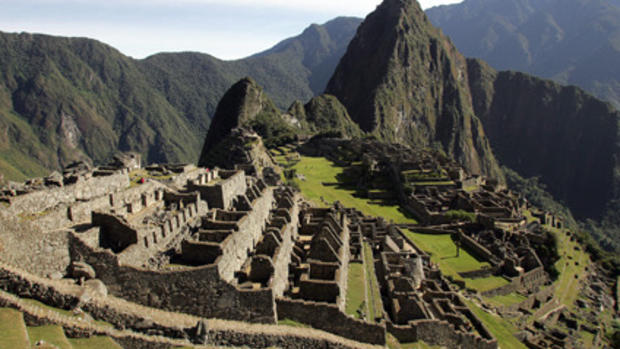
LIMA, Peru - Authorities in Peru say a German tourist plunged to his death in a deep Andean ravine while posing for a photo in an area above the Inca citadel of Machu Picchu that is closed to visitors.
The director of the Machu Picchu archaeological park told The Associated Press that 51-year-old Oliver Paps fell more than 300 feet Wednesday after entering a dangerous area by crossing over a barrier meant to keep tourists away from the edge. Director Fernando Astete said Friday that the body had been recovered.
Astete said other tourists reported details of the accident at a platform overlooking Machu Picchu that can be reached from the citadel by hiking up a mountain for more than an hour.
Machu Picchu is the main tourist destination in Peru.
More from CBS News
- International edition
- Australia edition
- Europe edition
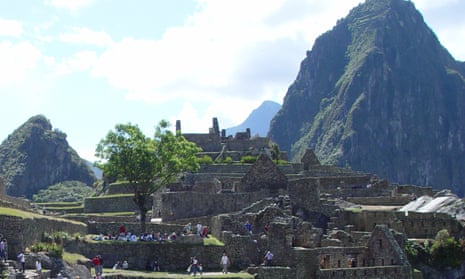
Tourist dies after falling off Machu Picchu summit while posing for photo
German visitor Oliver Paps, 51, dodged security barriers and entered restricted area to get picture taken Wednesday at popular Incan ruins in Peru
A German tourist has plunged 200 meters (650 feet) to his death while posing for a photo at the summit of Machu Picchu , police said on Friday.
Oliver Paps had asked another tourist to take his picture as he stood at the mountain’s peak overlooking the ancient Incan citadel in the Peruvian Andes on Wednesday.
“As another German photographed him, he fell into a deep abyss and died,” Santos Mamani, an official at the Machu Picchu commissary in Cusco, told AFP.
Before the fall, the 51-year-old had dodged security barriers and entered a restricted area, according to Cusco’s regional culture authority.
“‘I’m going to jump in the air – take a photo for me as a memory,’” said Paps before he died, according to an official witness who participated in the rescue mission.
Rescuers recovered the body from a deep ravine and sent it Thursday afternoon by train to a morgue in Cusco, from where it will likely be repatriated.
The Incas built the famous sacred site Machu Picchu in the 15th century to worship the sun. Now one of the most famous tourist destinations in South America, it became an official Unesco heritage site in 1983.
Most viewed
American tourists stranded in Machu Picchu as deadly unrest sweeps Peru
Deadly unrest in the wake of a political crisis has left a number of American tourists stranded in Peru .
Hundreds of international travelers, including some Americans, were stuck in and around the historic city of Machu Picchu as the government raced to secure transport to the nearest airport this weekend. Photos and eyewitness accounts suggest protesters had placed rocks on train tracks leading to the Inca citadel.
Solo traveler Brian Vega, a Miami-Dade fire rescue captain, told NBC News he had been visiting the ancient mountainous town but found himself stuck when the train lines to the airport were shut.
“We’re isolated here,” he said. “The only way in is via train or the other case would be a helicopter." Vega added that he was considering hiking to the nearest town to get to the airport.
Peru declared a 30-day national emergency on Wednesday after violent protests erupted following the ousting and detention of President Pedro Castillo, who had sought to dissolve Parliament in a last-minute power grab.
The declaration “means the suspension of the rights of assembly... freedom of movement,” Defense Minister Luis Otarola announced on Wednesday, suspending the rights of the people to gather and move freely across the Andean country. An overnight curfew was also in place across major cities.
Peru’s caretaker president, Dina Boluarte, exhorted Congress on Saturday to approve early elections that could provide a way out of the crisis.
At least 20 people have died, and more than 500 demonstrators and security forces have been injured in the unrest, according to the Associated Press.
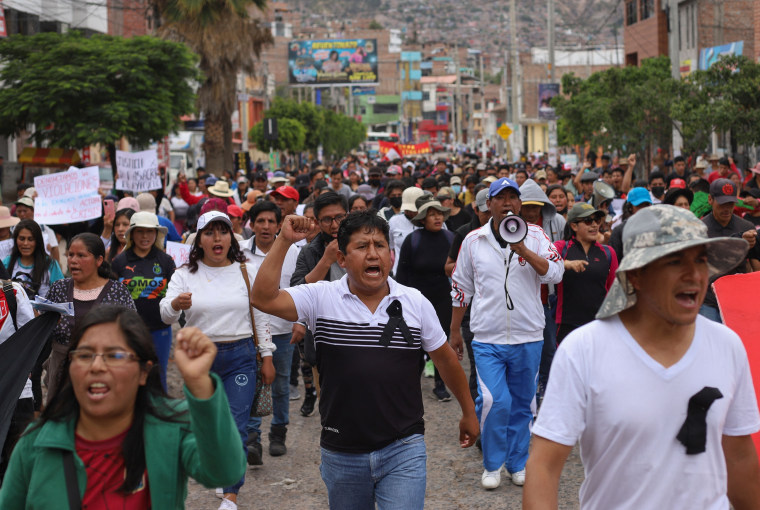
Many highways are blocked and train services have been suspended, leaving a number of tourists stranded for days at Machu Picchu with no transport from the UNESCO World Heritage site to an international airport almost 50 miles away in Cusco.
Colorado resident Tom Gray’s group had managed to take the last bus back to Aguas Calientes, the gateway town to the citadel, he told NBC News in a video interview.
He said that there were dozens still stuck at the top.
“Our guide had to bribe the protesters to move the rocks to let us go back to our hotel,” said Gray, who had first arrived at Machu Picchu on Monday night. Their group had to navigate through at least 18 roadblocks constructed by trees and boulders, he said, which were guarded by local villagers.
“There was like 200 of us rather than 5,000, which is the normal population” of the site, said Gray. “We had the whole place to ourselves.
“That was big time silver lining everywhere in being stuck here.”
All trains to and from Machu Picchu had been halted on Tuesday, PeruRail said in a statement posted on Facebook .
“The Government of Peru is organizing an evacuation via four helicopters of the most vulnerable foreign tourists from Aguas Calientes/Machu Picchu Village,” the U.S. Embassy in Lima said Saturday in a statement.
“The Peruvian government has informed the U.S. Embassy that plans are in progress to assist all travelers in Aguas Calientes/Machu Picchu Village with departure,” it said.
Almost 400 tourists from Machu Picchu were accompanied by the tourism police to Ollantaytambo District, northwest of Cusco, and then transported to the airport by bus, the ministry said in a tweet on Sunday.
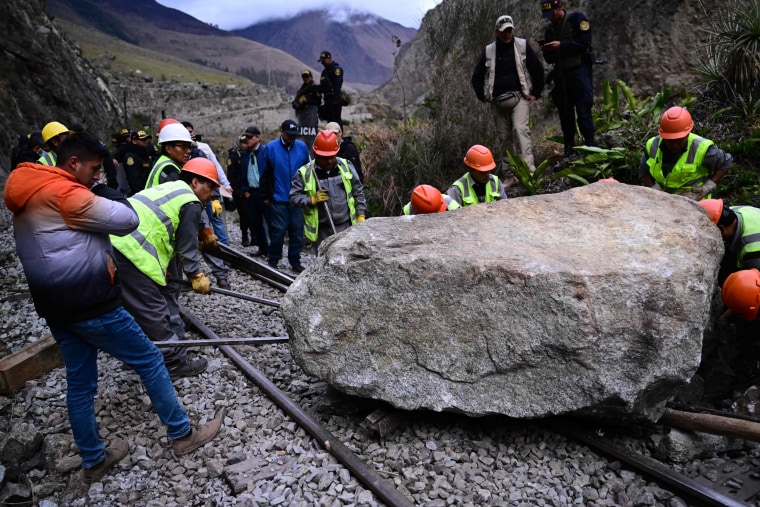
On Saturday, the ministry said it was planning to “facilitate humanitarian flights,” giving priority to the elderly and vulnerable people.
The violent unrest has prompted advisories from the U.S. State Department recommending citizens "reconsider travel" to the country, and similar guidance from other countries, including the U.K. and Spain.
Following the advisories, Daniels and McLaughlin booked their flights out of Lima for Sunday evening and Gray reserved his for Tuesday. “We can get to Cusco airport, that airport is open, which would transport us to Lima,” Daniels told NBC News, adding she would make her way once trains resumed.
"We miss our families though; we would like to get home. Our kids are all flying in to be with us for Christmas and they might have it without us," said McLaughlin.
Molly Hunter is a London-based correspondent for NBC News.
Mithil Aggarwal is a Hong Kong-based reporter/producer for NBC News.
German Tourist Dies Posing for Photo at Machu Picchu
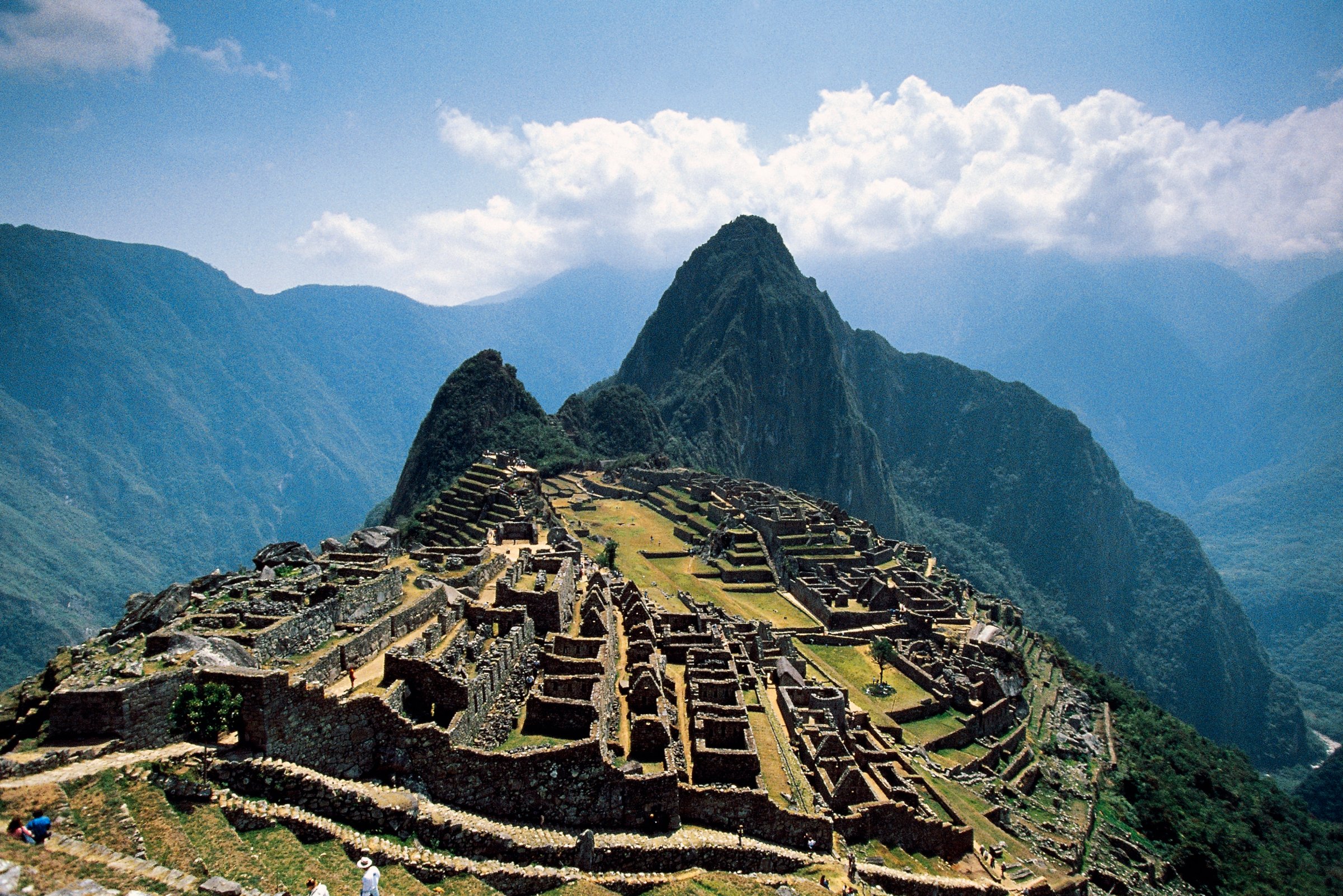
A German tourist died Wednesday trying to pose for a photo in a restricted area of Machu Picchu , according to reports .
Oliver Park, 51, slipped from a ledge and fell around 130 ft. as he tried to jump to pose for a photo, according to a Washington Post report . Peruvian officials said the area had been restricted. Park was found dead when rescuers reached him 90 minutes after his fall.
Park is far from the first to die on Machu Picchu. Many others have fallen—or had rocks fall on them—at the UNESCO Heritage Site , according to the report.
More Must-Reads From TIME
- Dua Lipa Manifested All of This
- Exclusive: Google Workers Revolt Over $1.2 Billion Contract With Israel
- Stop Looking for Your Forever Home
- The Sympathizer Counters 50 Years of Hollywood Vietnam War Narratives
- The Bliss of Seeing the Eclipse From Cleveland
- Hormonal Birth Control Doesn’t Deserve Its Bad Reputation
- The Best TV Shows to Watch on Peacock
- Want Weekly Recs on What to Watch, Read, and More? Sign Up for Worth Your Time
Write to Justin Worland at [email protected]
Tourist Falls To Death From Machu Picchu While Trying To Take Photo

Breaking News Reporter, HuffPost
A German tourist fell to his death while reportedly trying to pose for a photo on top of Machu Picchu this week.
The tourist, identified as 51-year-old Oliver Park , was in an off-limits area of the World Heritage Site in Peru Wednesday when he lost his balance, Fox News reported.
Officials said Park fell about 130 feet , according to the BBC. By the time first responders reached him, he was dead.
“He asked a man who was there to take a photo of him,” Guillermo Mestas, a Peruvian tourist, told local TV station Canal N ., according to The Washington Post . “The man came over to take the photo and in the moment he was handing him the camera, he lost his balance and fell.”
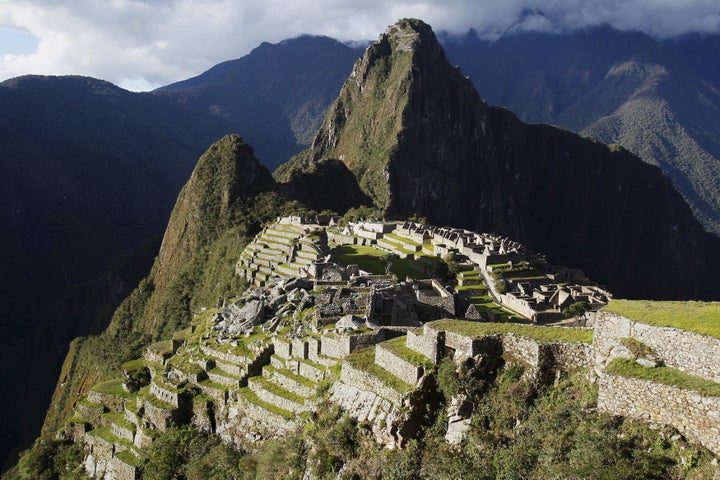
A conflicting report described Park as trying to jump in the air for the photo when he fell.
The man's death is just the latest in a series of tragedies involving tourists, worldwide.
Earlier this week, a South Korean tourist was posing for a photo, also in Peru, when he fell 1,600 feet off the Amazon 's Gocta waterfall, Fox News reported.
Last month, a Yellowstone tourist is believed to have died after walking off a boardwalk and falling into a boiling hot spring.
In September, a Japanese tourist died after falling down a staircase at the Taj Mahal in India while trying to take a photo with a friend.
More people reportedly died while trying to take a photo of themselves – in what’s commonly known as “death by selfie” -- than from shark attacks.
Support HuffPost
Our 2024 coverage needs you, your loyalty means the world to us.
At HuffPost, we believe that everyone needs high-quality journalism, but we understand that not everyone can afford to pay for expensive news subscriptions. That is why we are committed to providing deeply reported, carefully fact-checked news that is freely accessible to everyone.
Whether you come to HuffPost for updates on the 2024 presidential race, hard-hitting investigations into critical issues facing our country today, or trending stories that make you laugh, we appreciate you. The truth is, news costs money to produce, and we are proud that we have never put our stories behind an expensive paywall.
Would you join us to help keep our stories free for all? Your contribution of as little as $2 will go a long way.
Can't afford to donate? Support HuffPost by creating a free account and log in while you read.
As Americans head to the polls in 2024, the very future of our country is at stake. At HuffPost, we believe that a free press is critical to creating well-informed voters. That's why our journalism is free for everyone, even though other newsrooms retreat behind expensive paywalls.
Our journalists will continue to cover the twists and turns during this historic presidential election. With your help, we'll bring you hard-hitting investigations, well-researched analysis and timely takes you can't find elsewhere. Reporting in this current political climate is a responsibility we do not take lightly, and we thank you for your support.
Contribute as little as $2 to keep our news free for all.
Dear HuffPost Reader
Thank you for your past contribution to HuffPost. We are sincerely grateful for readers like you who help us ensure that we can keep our journalism free for everyone.
The stakes are high this year, and our 2024 coverage could use continued support. Would you consider becoming a regular HuffPost contributor?
The stakes are high this year, and our 2024 coverage could use continued support. If circumstances have changed since you last contributed, we hope you’ll consider contributing to HuffPost once more.
Already contributed? Log in to hide these messages.
Before You Go
Popular in the community, from our partner, more in crime.
- Newsletters
- Help Center
- Metro Atlanta
- Georgia News
- Legislature
- National & World News
- AJC Peachtree Road Race
- 2024 Election
- Trump Georgia case
Tourist dies while posing for photo at Machu Picchu
A German man died Thursday when he lost his balance while taking a photograph in the ancient Incan citadel of Machu Picchu, in Peru.
A representative with Peru's Ministry of Culture identified the man as Oliver Park, 51, according to Peruvian news station Canal N .
A witness told the TV station that the man asked another visitor to take a photo for him before he lost his balance and fell into a ravine around 130 feet deep. El Comercio , a newspaper based in Lima, reported the ravine was actually about 330 feet deep.
Officials told BBC News that Park was attempting to get a photograph of himself "leaping as if in flight," when he fell.
The man had ignored warnings and walked into an area restricted to visitors, according to El Comercio, in order to get closer to the ravine.
It's not the first time a tourist has died after falling near the archaeological site. German tourist Werner Jobst Grimpen, 73, died in 2013 after falling from a cliff on the Inca Trail, which leads to Machu Picchu. That same year American Rachel Cecilia Gian, 26, fell to her death while hiking on the lower portion of the mountain.
About the Author

Credit: HYOSUB SHIN / AJC
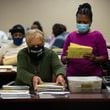
Credit: Rebecca Wright for the Atlanta Journal-Constitution

Credit: TNS
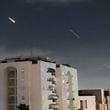
Credit: Miguel Martinez

- Travel Updates
Four tourists killed, 16 injured while visiting Machu Picchu ancient ruins
At least four people have died and 16 injured after the minibus they were travelling in crashed into a ravine following a trip to Machu Picchu.

‘F*** you, too’: Airline staffer loses it
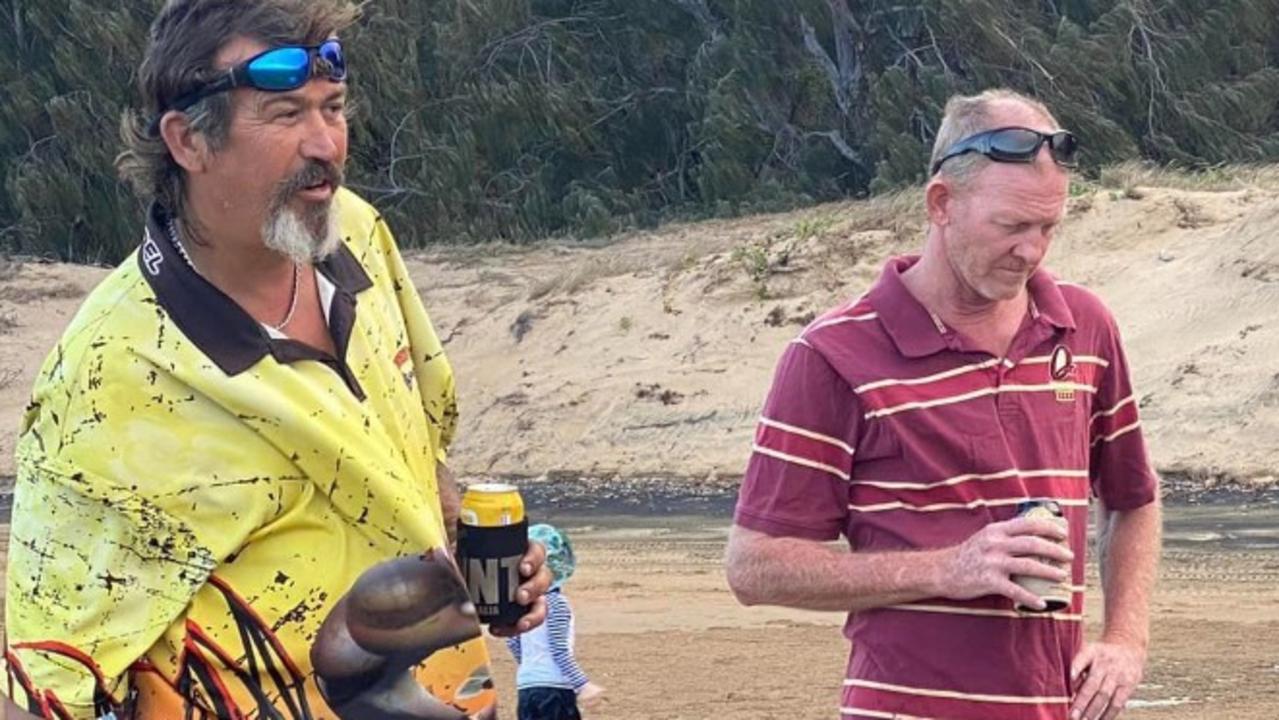
Incredible update after men lost at sea

Qantas reroutes major flight path
At least four tourists were killed and 16 injured after a minibus crashed into a ravine following a trip to the Machu Picchu ancient ruins on Sunday.
The Peruvian tourism and foreign business ministry said two of the tourists who died were Colombians and the other Peruvian.
Among the injured were four French nationals, two Greeks, two Israelis, two Canadians, two Argentines, two Peruvians, one from the Netherlands and one from Spain.
Sherwin Zevallos, the driver of the minibus, and a tour guide were among the injured.
The minibus was heading back from the popular tourist attraction of Machu Picchu when it went off the road, careering down 100m into a ravine.
The accident happened Sunday night around 100km from the city of Cusco, the former Incan empire capital which is the main departure point for many people visiting the Machu Picchu World Heritage site.
Peru’s Minister of Foreign Trade and Tourism Roberto Sánchez said the minibus went down “a ravine of a little more than 100m”.
“There was fog where the accident happened,” he said in a possible explanation for the crash.
An image showed the wreckage of the white minibus with its windows shattered and doors busted.
Stream your news live & on demand with Flash. From CNN International, Al Jazeera, Sky News, BBC World, CNBC & more. New to Flash? Try 1 month free. Offer ends 31 October, 2022 >

He said some of the injured tourists would be transferred to the Peruvian capital Lima by an air force plane.
“We deeply regret the loss of human lives and express our deepest condolences to their families,” Mr Sánchez added.
One of the injured, Timothee Malexeiux of France, told reporters from the city of Cusco he was sleeping when the bus crash occurred.
“I’m physically fine,” he said.
Machu Picchu, a jewel of the Peruvian tourism industry, was built in the 15th century as a religious sanctuary of the Incas and is located in the Amazon of southeastern Peru at about 2.4km altitude.
Accidents are common in Peru where speeding, poor road surfaces, and a lack of road signs contribute.
More Coverage

Three weeks ago, 16 people died when another minibus crashed into a ravine in the central Junin province.
Between January and October 2021, some 2053 people died in traffic accidents in Peru, according to the latest figures available.
– with AFP
An airline employee has been caught on film cursing at a passenger with the footage quickly going viral.
There’s been an incredible update after two fishermen went missing and family members took to social media in a desperate bid to find them.
Qantas has made a huge call on flights travelling a major route from Australia over fears of a potential Iranian attack as the conflict in the Gaza Strip escalates.
- New Terms of Use
- New Privacy Policy
- Your Privacy Choices
- Closed Caption Policy
- Accessibility Statement
This material may not be published, broadcast, rewritten, or redistributed. ©2024 FOX News Network, LLC. All rights reserved. Quotes displayed in real-time or delayed by at least 15 minutes. Market data provided by Factset . Powered and implemented by FactSet Digital Solutions . Legal Statement . Mutual Fund and ETF data provided by Refinitiv Lipper .
US Tourist Dies in Fall While Hiking the Inca Trail Near Machu Picchu

Cusco, Peru – An American tourist died after falling into a ravine while hiking near the famed Inca citadel of Machu Picchu, located in the southeastern Peruvian region of Cuzco.
According to RPP radio, Rachel Cecilia Gian, 26, fell near the town of Aguas Calientes in the lower part of the steep mountain on which the Inca ruins are situated.
Police told RPP that the woman's body was found Tuesday after a nearly five-hour search.
The accident happened near the area known as Inti Punco, known for its difficult topography. The woman was on the final leg of her journey and within a short distance from the historic site when she inexplicably fell into the ravine.
The Inca Trail is an alternative way to access Machu Picchu –the only other option being the train– and is used by thousands of tourists a year, especially foreigners. The walk, often guided by natives familiar with the harsh terrain, takes three to four days from the city of Cusco to the jungle where the fort is located atop a mountain. During the route travelers must go through a height of 4,200 meters above sea level.
Follow us on twitter.com/foxnewslatino Like us at facebook.com/foxnewslatino

Fox News' "Antisemitism Exposed" newsletter brings you stories on the rising anti-Jewish prejudice across the U.S. and the world.
You've successfully subscribed to this newsletter!
- Skip to primary navigation
- Skip to main content
- Skip to primary sidebar
- Skip to footer
TravelAwaits
Our mission is to serve the 50+ traveler who's ready to cross a few items off their bucket list.
Peru Closes Machu Picchu To Visitors Indefinitely — Here’s Why

- News and Tips
- Travel News
People have traveled to Machu Picchu — the famous Inca ruins in Peru — for centuries. Now, however, those visits have been stopped by the government due to ongoing civil unrest.
“In view of the current social situation in which our region and the country are immersed, the closure of the Inca trail network and Machu Picchu has been ordered, as of January 21, until further notice,” Peru’s Culture Ministry said in a statement . The closure is necessary “to protect the safety of tourists and the population in general.”
The events that spurred the decision to close the ruins, which typically draw around 1 million visitors each year, are continued violent demonstrations by protestors demanding the resignation of President Dina Boluarte. The protests began last month after then-President Pedro Castillo, Peru’s first leader who is from the rural Andean area, was impeached and sent to prison for trying to dissolve the country’s congress, according to the Associated Press .
So far, more than 55 people have died in the unrest. Then, on Saturday, the police arrested more than 200 protestors who were illegally on the campus of a university in Lima, according to Reuters .
At the same time, 417 visitors, 300 of whom were foreigners, had been stranded at Machu Picchu, explained Tourism Minister Luis Fernando Helguero, according to the Associated Press. However, since then, the Culture Ministry said it had safely evacuated those visitors.
Why Machu Picchu Is Famous
The ruins known as Machu Picchu , which date back to the 15th century, are located in the Cordillera de Vilcabamba area of the Andes Mountains. It was designated a UNESCO World Heritage site in 1983.
“It was probably the most amazing urban creation of the Inca Empire at its height; its giant walls, terraces, and ramps seem as if they have been cut naturally in the continuous rock escarpments,” according to the UNESCO World Heritage Convention .
“The Historic Sanctuary of Machu Picchu is among the greatest artistic, architectural, and land-use achievements anywhere and the most significant tangible legacy of the Inca civilization,” the UNESCO World Heritage Convention continues. “Recognized for outstanding cultural and natural values, the mixed World Heritage property covers 32,592 hectares of mountain slopes, peaks, and valleys surrounding its heart, the spectacular archaeological monument of ‘La Ciudadela’ (the Citadel) at more than 2,400 meters above sea level.”
Machu Picchu is believed to have been abandoned when the Inca Empire was conquered by the Spaniards in the 16th century.
Today, visitors can see approximately 200 structures “making up this outstanding religious, ceremonial, astronomical, and agricultural center,” the UNESCO World Heritage Convention explains.
What You Need To Know
While Peru’s government has closed Machu Picchu, train service to the area has been closed since last week because protestors damaged the train tracks. The airport at Cusco was also briefly shut down last week due to demonstrations.
In response, the U.S. State Department has issued a “Level 3: Reconsider Travel” advisory for Peru. U.S. travelers should, “Exercise increased caution due to civil unrest,” in the area, according to the State Department.
“Demonstrations occur regularly throughout the country,” the State Department explains. “Demonstrations can cause the shutdown of local roads, trains, and major highways, often without prior notice or estimated reopening timelines.”
In the meantime, Peru’s Culture Ministry explains that tourists who already bought tickets for Machu Picchu for dates from last Saturday, January 21, until 1 month after the end of the protests will be able to obtain a full refund.
Be sure to read all of our Machu Picchu content, including:
- 12 Amazing Experiences During Your Machu Picchu Adventure
- 9 Incredible Places To Visit Near Machu Picchu, Peru
- 9 Things I Wish I Knew Before Visiting Machu Picchu

Jim Fulcher has been a writer and editor his entire career. In addition to writing, he also enjoys traveling--particularly in an RV. Over the course of numerous trips, Jim has driven an RV through West Virginia, Virginia, Tennessee, Kentucky, Indiana, Illinois, Wisconsin, Iowa, Nebraska, South Dakota, and Wyoming. His favorite national park is Yellowstone, which he has visited three times.
Tourists evacuated after Peru closes Machu Picchu amid protests
European Union decries ‘disproportionate’ police response to the deadly unrest as protester death toll rises to 45.
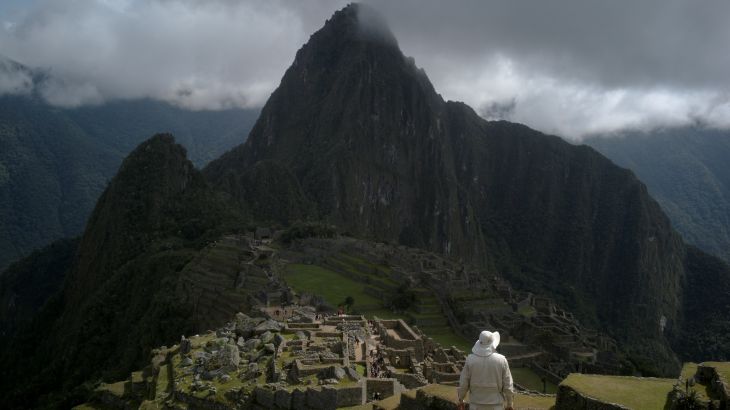
Peru has closed its famed historical site Machu Picchu amid deadly anti-government protests, stranding hundreds of tourists for hours, as the European Union decried what it called a “disproportionate” police response to the unrest.
The closure on Saturday came as officials announced that another protester had been killed , raising the total death toll to 46 since demonstrators took to the streets in early December demanding the resignation of newly appointed Peruvian President Dina Boluarte.
Keep reading
Peru president apologises for protest deaths, refuses to resign, peru declares state of emergency in lima over protests, what’s fuelling public anger in peru.
The latest death occurred in the town of Ilave in the south.
Video footage from Ilave that was widely shared on social media shows police shooting right at a crowd of Indigenous demonstrators in the town square. Enraged protesters responded by setting fire to a police station, local media reported.
Clashes between police and the crowd in the town near Lake Titicaca and the border with Bolivia left 10 people injured, hospital officials said.
Amid the unrest, the Ministry of Culture said it was ordering the closure of the Inca trails network and the Machu Picchu citadel “due to the social situation and to preserve the safety of visitors”.
Prior to the closing of Machu Picchu, rail services to the site had already been suspended due to damage to the track by demonstrators. The only way to get up to the popular tourist site is by train.
At least 400 people, including 300 foreigners, were stranded at the foot of the site, in the town of Aguas Calientes, and pleading to be evacuated.
Rescue teams later evacuated 418 tourists, the tourism ministry said in a Twitter post accompanied by pictures of a train and seated travellers.
The weeks of unrest followed a failed attempt by former President Pedro Castillo in December to dissolve Congress and rule by decree, a move condemned by the constitutional court as a “coup d’etat”.
Castillo was impeached and arrested, and his deputy Boluarte ascended to the presidency , becoming the sixth person to assume the role in five years.
The rapid-fire series of events was met with outrage from supporters of Castillo, whose unlikely rise from an elementary school teacher and son of illiterate farmers to the country’s president made him a folk icon among many low-income Peruvians. Experts have said a long history of exclusion in the country created fertile ground for the demonstrations.
In recent days, demonstrators have repeatedly defied declarations of a state of emergency in violence-racked regions to take to the streets.
Police arrested 205 people accused of illegally entering the campus of a major Lima university.
Alfonso Barrenechea, with the crime prevention division of the prosecutor’s office, told local radio station RPP that the arrests at the Universidad Nacional Mayor de San Marcos were made for illegally trespassing on the university’s premises and for allegedly stealing electronic goods.
The EU condemned the government’s response to the unrest, saying police had used “disproportionate force” against protesters.
“The EU calls on the government and all political actors to take urgent steps to restore calm and ensure an inclusive dialogue with the participation of civil society and affected communities as the way out of the crisis,” the 27-member block said in a statement.
“The ongoing social and political crises should be addressed in full respect of the constitutional order, the rule of law, and human rights,” it added.
Huayna Picchu Hike: The Stairs Of Death In Peru
The Huayna Picchu hike in Peru can be a bit challenging and scary at times, but it’s hands down one of the best things to do in Machu Picchu , the legendary lost city of the Incas.
This is a bucket list hiking trail that takes you to the top of Wayna Picchu (the iconic mountain behind Machu Picchu), and at the summit you get to see original Inca buildings and epic panoramic views.
Don’t be too scared by the nickname — even though these have been dubbed the Machu Picchu ‘Stairs of Death’ (for their steepness and narrowness), there have been very few accidents and deaths here over the years, and overall it’s quite safe as long as you don’t goof off.
This travel guide will explain how to get to Huayna Picchu mountain, how to safely hike the Huayna Picchu ‘Stairs of Death’, and everything else you need to know before you go!
Table of Contents show 1) Huayna Picchu: Quick Facts 2) What Does Huayna Picchu Mean? 3) Where Is Huayna Picchu? 4) Huayna Picchu Hike: What To Expect 5) Huayna Picchu Difficulty 6) Is Huayna Picchu Safe? 7) What To Bring 8) Huayna Picchu Tickets: How To Get Them 9) How To Get To Huayna Pichu Mountain 10) Is Wayna Picchu Worth It? 11) When To Hike Wayna Picchu 12) Best Machu Picchu Tours 13) Machu Picchu Hike List 14) Machu Picchu Hotels 15) More Things To Do In Machu Picchu
Huayna Picchu: Quick Facts
- Distance: 4 kilometers (2.5 mi) round trip
- Elevation Gain: 305 meters (1,000 ft)
- Top Elevation: 2,693 meters (8,835 ft)
- Duration: 2 – 3 hours round trip
- Difficulty: Moderate / Hard

The Machu Picchu ‘Stairs of Death’
What Does Huayna Picchu Mean?
The name ‘Wayna Picchu’ comes from the Quechua language, meaning ‘young mountain’ (‘wayna’ is young and ‘picchu’ is mountain).
‘Huayna Picchu’ is an alternative spelling for the same name, and it’s more commonly used on the internet nowadays.
Where Is Huayna Picchu?
Huayna Picchu is the mountain behind the famous Machu Picchu citadel in Cusco, Peru, which was home to the Incas in the 15th century.
This mountain is sometimes confused with Montana Machu Picchu, which is another nearby peak you can hike, but Huayna is actually the iconic mountain you see directly behind the ruins when you first enter Machu Picchu and stand at the famous viewpoint.
To reach Huayna Picchu and start the hike, you first have to walk through the Machu Picchu ruins, since the trail starts on the north side of the park.

Huayna Picchu is the mountain behind Machu Picchu
Huayna Picchu Hike: What To Expect
The Huayna Picchu hike is a scenic trail that takes you up a jungle-covered mountainside on stone stairways built by the medieval Inca empire.
It’s a bit challenging, but entirely non-technical, and fit hikers can reach the top of the mountain in 1 hour or less. The steepest staircases are at the end of the hike, near the summit.
In spite of its difficulty, this trail is in high demand and it’s limited to only 400 hikers per day, so you often have to book several months in advance to get a spot.
The details below will explain each part of the Huayna Picchu hike and what to expect. It’s an unforgettable experience!

The mountain

• Trail Beginning
The good scenery starts almost immediately on the Huayna Picchu hike.
Right away, you get clear views of Putucusi mountain and the Urubamba river, with a row of dramatic green peaks in the distance.
From here on, there is really only one path leading to the top of Huayna Picchu, and plenty of other international hikers headed in the same direction, so you can’t get lost.
The rest of the hike is an uphill trudge on Inca stone stairways, although many of the switchbacks have enough plant cover to give you some shade from the sun.
These stone steps are not in the greatest condition, but they still make the hike a bit more manageable than stairless hikes where you’re walking on dirt or mud.

Instant views of Putucusi mountain and the Urubamba river.

Starting the Wayna Picchu hike

Entering the brush
• Inca Buildings
After about 20-30 minutes of hiking, you’ll get your first views of the Machu Picchu citadel behind you in the distance, reminding you how high you already are!
At this point, the stairway becomes a lot more steep and narrow, so there’s a steel cable you can hold for extra balance. The stone steps are still secure enough, but their small size makes them a bit awkward.
This is also where you’ll encounter your first Inca buildings and terraces on the path ahead, which you’ll traverse on your way to the summit of Huayna Picchu mountain.
According to the locals, these structures were inhabited by the priests of Machu Picchu.

Inca buildings

Near the top
Most of these Inca buildings are open to the public, so you can walk around in them and take a breather before continuing the Huayna Picchu hike.
A few of the buildings have windows with stunning views of the Andes mountains. What would it have been like to live up here? Can you imagine?
We wanted to stay longer and spend hours exploring these ruins, but we were too excited to see the grand finale of this hike — the Huayna Picchu ‘Stairs of Death’ — and the final summit!
• Machu Picchu Stairs of Death
It’s time for the Machu Picchu ‘Stairs of Death’! This epic stone staircase is your final challenge before reaching the summit of Huayna Picchu mountain.
In spite of the scary name, you’re really not in imminent danger here and the path is plenty wide. Don’t get me wrong though, the views are dizzying!
There are steep drop-offs, but they’re not as close as they seem. Even if you somehow fell off the stairway, you would land on one of the grassy terraces with room to spare.
It’s not known how many steps there are in total, but many of them are irregularly shaped and quite stubby, so you may not always be able to fit your whole foot on them.
The traffic on this stairway only goes in one direction (up), and there are several places to step off the trail and let other hikers pass, so you don’t need to rush through it.
The Huayna Picchu ‘death stairs’ were my favorite part of the whole hike. We must have spent the better part of an hour here, just soaking up the views and trying to take pictures that capture the vertigo-inducing scene.

Climbing the Huayna Picchu ‘Stairs of Death’
• Huayna Picchu Summit
After walking a short distance past the last stone stairway, you’ll reach the summit of Huayna Picchu Mountain!
The Huayna Picchu altitude is 2,693 meters (8,835 ft), and you have spectacular views of Machu Picchu and the zigzag switchbacks of the bus road leading to the citadel.
You’re surrounded by the Andes mountains on all sides. You can even see Huchuy Picchu mountain (which looks tiny below), and the pointy peak of Montana Machu Picchu.
In my opinion, it’s one of the best views anywhere in Peru, and if you reach the top at a busy time you may have to wait in line here for pictures.
Be careful at the top of Huayna Picchu because, again, there are some steep drop-offs here if you aren’t careful. There is usually a ranger stationed at the top to make sure people aren’t doing anything dangerous.

Summit views from Huayna Picchu mountain

Machu Picchu citadel as seen from above (with a zoom lens).

Summit sign

Machu Picchu in the distance
• Temple of the Moon
Shortly after reaching the summit of Huayna Picchu mountain, keep an eye out for a spur trail to go around the backside of the mountain.
This path leads to the Temple of the Moon ( Huaca de la Luna ), which is an ancient ceremonial temple inside of a cave that may have held mummies back in the day.
This fascinating cave temple is an optional detour from the main path at Huayna Picchu mountain, and it’s not always open to hikers, but it’s well worth seeing if you’re able.
If you plan to visit this side trail, budget an extra 2 hours of total hiking time at Wayna Picchu.
• The Tunnel
On the way down from the top of Huayna Picchu mountain, there’s a short, narrow tunnel you have to cross to get back to the main trail.
This passage is very small at the entrance, so you might have to remove your backpack and crawl just to get through it. It’s another neat little feature of the hike that we thought was really cool.
After passing this tunnel, the path loops back to the original trail and you can make your way down to the start of the Huayna Picchu hike.

Huayna Picchu Difficulty
This hike is challenging, but it’s not extremely hard or dangerous. It’s like a stairmaster, not a via ferrata. We expected it to be harder based on things we’d read online.
The main difficulty at Huayna Picchu is the steepness of the stairs and also the altitude, which makes it harder to get your breath. However, if you’ve already spent a couple days acclimating in Peru, then the altitude shouldn’t be a big factor.
If you want to train for this hike, just climb lots and lots of stairs!

Is Huayna Picchu Safe?
Huayna Picchu is a very safe hike if you’re careful, although I wouldn’t recommend it for young kids, unfit older folks, or anyone who is not surefooted and comfortable with heights.
The safety has improved in recent years. In the past, the loop section near the summit was hiked in the opposite direction, meaning you’d walk down the Huayna Picchu ‘Stairs of Death’, instead of up. As you can imagine, this was scarier and more awkward than the current setup!
In any case, hundreds of people successfully hike the Huayna Picchu ‘death stairs’ every day, and accidents are very rare. You don’t need any technical skills to do it, just a good level of fitness.
I wouldn’t say hiking Huayna Picchu is for everyone, but if you enjoy adventure, photography, and a good adrenaline rush, then definitely add it to your Peru bucket list!

Wayna Picchu Accidents & Deaths
The internet is rife with exaggerated myths about the death rate at Wayna Picchu, but most of these stories and figures don’t seem to be accurate.
However, here are a few Wayna Picchu accidents that are confirmed and verifiable:
- In 1997, a 68-year-old American tourist fell and died near the top of the Huayna Picchu hike. ( Source: UPI )
- In 2004, a Russian tourist died after being struck by lightning on the mountain. ( Source: Washington Post )
- In 2009, a 66-year-old American tourist died of “massive internal injuries” after falling from “a mountain above Machu Picchu,” but it’s not clear if this was Wayna Picchu, the Inca Trail, or possibly Montana Machu Picchu. ( Source: ABA Journal )
- In 2014, a Belgian tourist reportedly died on the Huayna Picchu hike, but no other details are known, so it’s anyone’s guess what may have happened. ( Source: Washington Post )
- In 2016, a German tourist fell 200 meters and died while ‘jumping in the air’ trying to get stunt photos near the edge of a cliff. Again, it’s not known if this was at Wayna Picchu or Montana Machu Picchu. ( Source: NY Daily News )
There have been many other deaths at Machu Picchu over the years, but if you dig into the details, most of these accidents happened on the Inca Trail or at the citadel itself, and the circumstances were out of the ordinary.
The main killers at Machu Picchu over the years have been heart attacks, falls, lightning strikes, rockfalls, and selfie accidents — seemingly in that order.
Any of these accidents are unfortunate, of course, but remember millions of people visit Machu Picchu every year, and there are usually zero deaths per year at both Machu and Huayna Picchu.

All smiles!
How To Safely Hike Huayna Picchu
So what are some ways you can stay safe and lessen your risks at Huayna Picchu?
Well, as you can see from the accounts mentioned above, you should at least try to give the mountain a bit of healthy respect. If there’s one thing that can make Huayna Picchu dangerous, it’s goofing off or trying to take selfie photos by the edge of a cliff.
You should also wear proper footwear, stay off of mountains in a thunderstorm, and don’t attempt hikes that are beyond your physical abilities.
If you’re still feeling unsure about Huayna Picchu, you also have the option of hiring a private tour guide for the hike, that way there’s someone experienced to explain everything for you as you go.

Scurrying up the Machu Picchu ‘Stairs of Death’
What To Bring
- Shoes. This trail is not a good one for flip flops. Hiking boots are best if you have them, but you’ll at least want shoes with good grip for Wayna Picchu.
- Water. Try to pack at least 1 liter of water per person. It’s important to stay hydrated at higher altitudes.
- Snacks. We brought some granola bars and shared them at the top of the mountain, after climbing the stairs.
- Sunscreen. The sun is another thing amplified by the altitude, so you’ll want sunscreen and a hat to avoid burns.
- Poncho. A raincoat is good to have, just in case. This is especially important if you go in the rainy season.
- Bug Spray. We didn’t use any bug repellant, and came away with a few bites, so it could be handy.

Exiting the cave

The peak of Huayna Picchu as seen from below. If you zoom in, you can see the tiny hikers.
Huayna Picchu Tickets: How To Get Them
A permit is required to hike Wayna Picchu, and only 400 permits are given out per day (200 during Covid), which keeps down congestion on the trail. These can only be bought online.
This restriction, combined with the trail’s wild popularity as a bucket list item, means you will probably have to book your tickets several months in advance if you want to do this hike, otherwise they sell out.
You can book your tickets on the official Machu Picchu ticket website ( https://www.machupicchu.gob.pe ), or on the GetYourGuide tour website . The official site is a bit cheaper, but it’s entirely in Spanish and the design is a confusing mess.
The biggest benefit of booking on GetYourGuide is that the tickets are 100% refundable if you change your mind before you go. The official Machu Picchu website staff, on the other hand, are often stingy with refunds in our experience. GYG is also a more convenient website that’s written in English, whereas the official site is currently Spanish only.
Both websites are reliable and you can use either to purchase your Wayna Picchu tickets. A local tour guide isn’t required for this hike, you just need tickets. However, you can always hire a guide at the entrance of Machu Picchu if you’d like, and after agreeing on a price, they’ll accompany you into the ruins, explain things, and take pictures for you.

Green mountains in all directions
Hours & Fees
The whole Machu Picchu area is open 6:00 AM – 5:30 PM daily.
Stays are supposedly limited to a few hours, but the staff doesn’t enforce this, and as long as you aren’t causing a problem you can pretty much stay as long as you like.
For the Huayna Picchu hike, tickets are split up into four different entry times in order to reduce congestion on the trail. For each of these time slots, 100 tickets are available (400 total per day).
Choose a time slot that suits you, and keep in mind it only affects when you’re required to enter. Once you’re inside the control gate for Huayna Picchu, you can stay as long as you like!
The current adult ticket price for Huayna Picchu is 200 soles (~$52 USD) as of 2022, and that gives you entrance to the mountain and also Circuit 4 of the Machu Picchu ruins. Students and minors (ages 3-17) get a 50 percent discount.

The Huayna Picchu ‘Stairs of Death’
This route map shows how to get to Huayna Picchu from the main entrance of the Machu Picchu citadel. You can click on the picture to enlarge.

Route map showing how to get to Huayna Picchu. Click to enlarge.
How To Get To Huayna Pichu Mountain
The hiking trail for Huayna Picchu is located on the north side of the Machu Picchu citadel, behind a control gate that you also pass to reach the Huchuy Picchu hike .
You can see the route map above for a general idea of where to go, but be prepared to ask the staff for directions, because even with a map it can be a bit tricky to find if you’re in a hurry.
Remember to be at the main Machu Picchu entrance gate at least 1 hour before the entry time that’s printed on your hiking ticket, because there may be lines at the entrance of the citadel, and it can also take 15-30 minutes to walk from the start of the citadel to the Huayna Picchu control gate.
This is important, because you risk losing your tickets if you’re late. The staff is very unforgiving and they won’t let you enter the control gate at Huayna Picchu if you’re even one minute later than the entry time printed on your hiking ticket (it’s a hassle, I know).
Shortly after you reach the control gate, you’ll be asked to sign your name in the guest list (before and after the hike) in case anyone happens to go missing on the mountain.
From here, the trail is well marked with a sign indicating which way to go for Huayna Picchu, which quickly splits off from the path to Huchuy Picchu . At this point, everything becomes straightforward.

Entrance gate for Huayna Picchu and Huchuy Picchu

Wooden sign at the trail fork

Putucusi Mountain
Is Wayna Picchu Worth It?
Yes, the Wayna Picchu hike is so worthwhile!
It’s an amazing combination of scenery, history, thrills, and challenge. We loved this hike and I hope I can do it again someday. It’s like something out of Indiana Jones.
Plus, it’s fun to look at the classic photos of Machu Picchu and know that you’ve hiked the mountain right behind it.

One last look at Huayna Picchu mountain before we said goodbye!
When To Hike Wayna Picchu
Generally the best time to do hikes at Machu Picchu is during Peru’s dry season, which runs from May to October. The days are more sunny during this time, and there’s a lot less rain.
With that said, I wouldn’t write off the rainy season completely. We did this hike and several others in January, and had fine weather. The rain usually comes in the afternoons or evenings, but bring a poncho just in case.
In my opinion, the best time of day to climb Huayna Picchu is in the late morning. This is usually when the morning mist clears, giving you better views of the Andes mountains.
Best Machu Picchu Tours
If you want a prearranged tour for your visit to Machu Picchu, there are plenty of good online options.
GetYourGuide has full day tours of Machu Picchu starting from Cusco (private or with a group), as well as spectacular mountain hikes like Huayna Picchu , which requires an advance booking anyway since it's so popular.
We used this company for lots of tours and activities in Peru, and they're great. Highly recommended!
Machu Picchu Hike List
This hike is one of many at the Machu Picchu citadel in Peru.
- Machu Picchu Mountain: The highest mountain in the area, and the toughest to climb. The summit elevation is 3,082 meters (10,111 ft).
- Huchuy Picchu Mountain : A short, relatively easy hike to the top of a small mountain behind the citadel.
- Huayna Picchu Mountain: That’s this one. The most famous and spectacular hike at Machu Picchu. The summit elevation is 2,693 meters (8,835 ft), but to reach the top you have to climb the so-called ‘Machu Picchu Stairs of Death.’
- Inca Sun Gate: Also known as Inti Punku, this is a moderate hike to a scenic viewpoint at an Inca gate, which originally served as the main entrance to Machu Picchu.
- Inca Bridge: This short hike is an easy little detour to see a bridge that once served as the secret back entrance to Machu Picchu.
- Inca Trail: If you really want to make a grand entrance to Machu Picchu, consider the Inca Trail. This is an iconic multi-day hike in Peru that takes 1-7 days (depending on where you start), and it ends at the Machu Picchu citadel. Much of the trail is on roads that were originally built by the Incas.
- Putucusi Mountain: A dangerous, unmaintained ladder trail to the top of Putucusi, which is an arrowhead-shaped mountain you can see across the river from Machu Picchu. Unfortunately the main ladder for this hike was destroyed by bad weather more than 4 years ago, so it’s very rarely climbed now. Hopefully the path will be fixed someday.
Machu Picchu Hotels

Hotel Ferre

Flower's House

Hotel Taypikala

Machu Picchu Land
More Things To Do In Machu Picchu
Thanks for looking! I hope you enjoyed this travel guide for the Peru ‘stairs of death’ on Huayna Picchu mountain.
Don’t forget to check out my complete list of the top 10 best things to do in Machu Picchu Peru!
You may also like
10 best hikes in aruba: family friendly trails, how to visit tanjung puting national park in indonesia, banggai islands travel guide & itinerary for sulawesi indonesia, paisu pok lake in banggai: bluest lake in indonesia, samet nangshe viewpoint: best sunrise spot in thailand, 7 days in bhutan travel itinerary: best things to do & see, 10 comments.
I climbed Huayna Picchu back in 1990 and it was bare bones as far as any cables, ropes or anything else to help you up the mountain. The one rope was frayed, but I had to get to the top. Amazing view! I actually slept in Machu Picchu one night, (illegally) but was worth it! Kinda creepy though.

That’s great! I’d love to sleep in Machu Picchu. I’m sure that was an amazing experience.
Did the route of descent recently change? In youtube videos and other blogs (2018 and earlier) it’s like as if the descent looks a lot scarier than written in this blog. We are doing the Huayna Picchu climb next week and I can’t help but panic every now and then because of the stories and videos of the descent. Was is really much scarier than the ascent? Love this blog! Very helpfull!
Hi Chloe! Yes, in the past, the loop section near the summit was hiked in the opposite direction, meaning you’d walk down the steep stairs when you descend. But nowadays, you hike up the steep stairs. It’s a bit easier and less scary than it was before. Some of the videos and pictures on the internet also exaggerate the steepness, so it looks worse than it actually is. It’s really not too bad. I’m sure you’ll have a great hike. Good luck!
I hiked Huyana Picchu in 1993 (as a 27 year old) and you would go through the tunnel on your way up and the stairs of death on the way down. I discovered I had a fear of heights when I came out of that tunnel and made my way to the summit. I was ok for the first minute or so and then panic set in as I was looking around and down. I had a lot of trouble getting onto the stairs when it was time to leave, it was similar to getting on a ladder going down. We were stuck up there for a couple of hours until I was coaxed and convinced that I had to get on those stairs. Going the opposite way, taking the stairs of death up and the tunnel down seems so much easier. I had no idea they were referred to as the stairs of death until recently. Also, there were no crowds, very few people even hiked the trail the day we went up. Even though I got scared at the top, I’m so glad I made the hike – it was memorable!
Nice! Yes, it’s such a memorable hike.
I am scared of height but really want to do this hike next year. At the first set of stairs of death, is it really a drop off? If I trip or fall, will I die ? LOL
It’s not too bad. There is plenty of room to stay away from the drop offs if you’re careful. It’s a wonderful hike!
Do you need hiking boots or are sneakers ok to wear?
Sneakers should be okay to wear as long as they have some grip.
Leave a Comment Cancel Reply
Save my name, email, and website in this browser for the next time I comment.
National Geographic content straight to your inbox—sign up for our popular newsletters here

- CORONAVIRUS COVERAGE
The collapse of tourism brings problems to Machu Picchu
As international travel disappeared, hospitality workers in Peru turned to farming and construction. COVID-19 vaccines could bring back their jobs.
In the fall of 2020, a woman walked by the Cathedral of Cusco high in the Peruvian Andes. Tourism in the area surrounding the Incan ruins at Machu Picchu have come to a halt due to COVID-19 closures, and many residents have returned to agriculture and other trades to support themselves.
Juan Yupanqui stared at a pile of mattresses, still wrapped in the plastic they came in when he bought them nearly a year ago. He wondered out loud if they would ever do more than gather dust.
The mattresses were stacked in one of the round, thatched-roof guesthouses Yupanqui built last year on his homestead in Patacancha, a small village nestled more than 11,000 feet above sea level near the colonial city of Cusco, in Peru ’s southern Andes. With their small windows and rustic furniture, the cabins were erected to expand his family’s experiential tourism business .

In the fall of 2020, Rosmery Barriga and her father Ramón Barriga removed crafts and souvenirs from their store in the Inca town of Ollantaytambo, a popular stop on the route to Peru’s Machu Picchu. COVID-19 measures kept the shop closed for months, and the Barrigas experienced thefts and break-ins.

Park ranger Tomas Huamanttica Quispe looked over the empty Moray Archaeological Center in the fall of 2020. The Inca site holding terraced depressions is believed to have served ceremonial or agricultural purposes. Like most tourist attractions near Machu Picchu, it was closed for months due to the COVID-19 pandemic.

Sebastián Tobón, owner of Supertramp Hostels in Aguas Calientes, Peru, sits in one of his empty properties in the Peruvian town adjacent to Machu Picchu. The COVID-19 pandemic has decimated the tourism economy in the area surrounding the Inca ruins, which attract more than a million visitors in a normal year.
Tourist arrivals started to pick up in 2019 after Yupanqui had worked on the property for years, with an average of five groups a month coming to spend a day or two learning how to herd alpacas; weave the colorful red ponchos that are a community trademark; and dance a quellwa tusuy , a festive step that means “dancing bird” in Quechua, the local language.
Yupanqui decided to upgrade his guesthouses after a brisk start to 2020. Then everything came to a screeching halt in March as Peru imposed a harsh lockdown in response to the COVID-19 pandemic. The French and U.S. tourists he expected that month cancelled, and his cabins have sat empty since then.
Agriculture remains the cornerstone of life in Patacancha and similar hamlets high in the Andean valleys outside of Cusco, but it is tourism that generates cash flow. For now, the visitors have stopped arriving. Yupanqui and thousands of others who worked in the multi-layered tourism industry in the region around Machu Picchu are wondering how long they will be able hold out before tourist dollars and euros return.
A tourism industry in crisis
“Tourism gave us money. Today, we have food, but we don’t have any money,” said Yupanqui, posing for a photo with a lamb, something his visitors used to do. “I get more concerned each day, because we don’t know when this is going to end.”

Weavers like Myriam Cuba Callañaupa (far left) usually demonstrate textile crafts and cooking in the village of Chinchero near Cusco. But the COVID-19 pandemic forced her and many other women who work in tourism to temporarily return to farming.
Besides homestay tourism, many of the men in Patacancha earn cash working as porters or cooks for adventurers hiking the Inca Trail, the ancient route that leads to Machu Picchu. Yupanqui, 44, did this for 18 years. Women in the community weave ponchos and other textile crafts sold in local markets.
The Yupanquis and other Patacancha families are getting through the pandemic financial crisis by selling alpaca yarn and chuño , naturally freeze-dried potatoes , to traders. They raise animals for food, though this is not possible for many of the thousands of people who worked in tourism around Cusco.
(Get a taste of why potatoes are such a hot commodity in Peru.)

In the fall of 2020, a girl stood outside her family’s store in Aguas Calientas, Peru. The Andean town near Machu Picchu is usually buzzing with tourists, but it has been nearly empty since the COVID-19 pandemic began.
Eliana Miranda, director of the Cusco government’s tourism bureau, said 92 percent of people employed in the industry—from hotel receptionists to sidewalk souvenir sellers—had lost their jobs as of August, when Cusco entered into a second lockdown.
“We have had problems in the past, but nothing as devastating to the industry as COVID-19,” she said.
According to Peru’s government, the country’s tourism business could be down as much as 85 percent for 2020. The World Travel and Tourism Council estimates that the direct and indirect economic impact of tourism in Peru in 2019 was approximately $22 billion, or 9.3 percent of the country’s gross domestic product.
Cusco’s airport received nearly 635,000 travelers in the first two months of 2020, up 16 percent from the same period in 2019. The number was only 231,726 over the next eight months, with nearly three quarters of those arrivals in March, according to Peru’s Trade and Tourism Ministry. Only 990 passengers arrived at Cusco’s airport in June, compared to 323,367 the same month last year .
Tourist visits to Machu Picchu, the Inca ruins that anchor tourism in Cusco and draw foreign travelers to Peru in general, were down 72 percent in the first half of the year. The site was receiving around 500 people a day in December, nearly all of them Peruvian tourists, down from more to 2,500 during normal times. The government eliminated the entrance fee to Machu Picchu for Peruvians to stimulate domestic tourism. The site received 1.6 million tourists in 2019.
(Learn how women porters are breaking the glass ceiling on the Inca Trail.)
Turning from tourism to other industries

In the fall of 2020, after a pause due to the COVID-19 pandemic, the train between Ollantaytambo and Aguas Calientes, Peru, reopened to local users. Aguas Calientes, nicknamed Machu Picchu Town, is the gateway to the Inca ruins, the most visited tourist destination in the country.
Miranda said there has been an exodus from the tourism industry, with people moving to other businesses or returning to rural areas to wait out the coronavirus crisis. Her office is coordinating with workers’ associations and local governments to provide assistance to people displaced by the collapse of tourism.
“We have labor training and short-term programs to help maintain income. We have been working with municipalities on job programs for people who have returned, but we think it is going to be temporary. Everyone is really waiting for tourism to return,” she said.

Fernando Condori Torres and his son Gonzalo tended to apple trees in front of the Ollantaytambo archaeological site in Cusco, Peru in late 2020. Torres, who used to work as a tour guide, had temporarily returned to farming due to COVID-19 shutdowns.

Hilda Ortiz de Orue Bautista worked maintaining and harvesting salt from the natural pools in the town of Maras. The popular Peruvian tourist site was closed for months due to the COVID-19 pandemic.
The clock, however, is ticking for many in the hospitality business.
Rubén Tello, a tour guide who speaks Spanish, English, and Quechua, hasn’t worked in the industry since he helped a group of Thai visitors rush home on March 15, 2020, as the government announced it would be closing the borders. He stayed in his apartment for two months, figuring the situation would be resolved by mid-year. When the pandemic didn’t improve, he decided to “reconvert,” the term being used for people leaving tourism for other industries.
“I thought I could wait this out, but the bills started piling up, and by July I had no choice but to find other work,” he said.
Tello said goodbye to his wife and twin 14-year old boys in the city of Cusco and headed to the nearby jungle lowlands, where he is from originally, to look for employment. He found a job driving a truck on a highway construction project. He later worked as a toll collector.
Tello came back to the city in early December, with two groups of tourists lined up and a few others in the wings. But he is realistic about his prospects. “I can’t make ends meet with a group or two a month. If the situation doesn’t pick up in January, I will go back to the construction job,” he said.
How the industry might rebuild

In the fall of 2020, a policeman asked locals to keep their social distance on the esplanade of the Church of San Cristóbal above Cusco, Peru. The spot is popular with tourists and residents for its panoramic views of the colonial city.

Maria Santos Quispe swept the cobblestones in front of her shop on Cusco’s Hatunrumiyoc Street. Though she usually stocks mostly textile art and other souvenirs, she now also carries fruit and sundries. “I have learned that I have to be attentive to all kinds of people,” said Quispe. “Before we did not offer anything to the local population.”
Sofia Arce, who runs a boutique tourism agency, Intense Peru , said the pandemic is transforming the industry. She worries that many restaurants and hotels catering to tourists could close permanently if Peru tries to simply go back to business as usual.
A former banker, Arce managed through the worst months of the coronavirus crisis with a government-backed loan from the Reactivate Peru program, and has started to rebuild as the country reopens.
Peru began allowing international air travel again in October and, in December, reestablished nearly all routes including long-haul flights from Europe and North America. Arce considers these positive steps for tourism, but believes it will take time to get back to pre-pandemic numbers.
“We have sold four tour packages for December, the first ones in nine months. It is a start, but we are going to have to be super active to regain our market,” said Arce. “There is no room for slacking off if we want to build back better.”

Before the COVID-19 pandemic, tour guide Fernando Condori Torres spent much of the year away from his home near Cusco. Due to COVID-19 lockdowns and cratering tourism in Peru, in 2020 he has spent more time with his son, Gonzalo.
A new concern for Arce and others in the industry is Peru’s current political instability—it had three presidents in the span of eight days in November—and rising social demands created by the pandemic-ravaged economy. Peru’s economy contracted by 13.4 percent in the first 10 months of the year; the hospitality industry was down 54 percent from to 2019, the most significant drop in the calculation by the national statistics agency. The national unemployment rate is 15.1 percent .
Machu Picchu, just starting to recover, was forced to close again briefly in mid-December when communities along the train that ferries tourists to the ruins called a strike and blocked the tracks, demanding lower prices for locals who also use the service.
(Explore Peru beyond Machu Picchu via sacred rivers, bike trails, and otherworldly sand hills.)
“The political problems are adding a new dimension to the problems here. I think tourists could stay away a little longer if we had instability due to the pandemic,” said Fabricio Zelada, who recently moved back to Cusco after years of living in the country’s capital, Lima.
Peru’s trade and tourism minister, Claudia Cornejo, recognizes that the industry still faces a tough climate, estimating that it might take two or three years for it to return to pre-Covid traffic. The government’s idea is to use the crisis as a reset button so that tourism can “return differently.”
Cornejo said the conditions created by the lack of tourists today should be used by industry “to concentrate on improvements, making upgrades needed so that when receptive tourism begins, we are ready to offer even more than before.”
She sees the kind of experiential, more sustainable tourism offered in places like Patacancha as part of a trend that was gaining ground prior to the pandemic, with tourists wanting to go beyond observing a culture to experiencing it. She said the pandemic might even give it a boost.
“I think experiential tourism is going to continue. COVID-19 interrupted it, but will not stop it,” she said.
Related Topics
- SUSTAINABLE TOURISM
- AGRICULTURE
- ARCHAEOLOGY
You May Also Like


These remote Inca ruins rival Machu Picchu

Explore Inca life beyond Machu Picchu on this South American trail
Free bonus issue.

Meet Rodrigo Pacheco, the Ecuadorian chef shining a light on native ingredients

These historic Greek sites shed fresh light on Alexander the Great’s lost kingdom

In Tajikistan, discover the ruins of a once mighty Silk Road kingdom

20 of the coolest travel adventures for 2024

One of Italy’s most visited places is an under-appreciated wine capital
- Perpetual Planet
- Environment
- Paid Content
History & Culture
- History & Culture
- History Magazine
- Mind, Body, Wonder
- Gory Details
- 2023 in Review
- Terms of Use
- Privacy Policy
- Your US State Privacy Rights
- Children's Online Privacy Policy
- Interest-Based Ads
- About Nielsen Measurement
- Do Not Sell or Share My Personal Information
- Nat Geo Home
- Attend a Live Event
- Book a Trip
- Inspire Your Kids
- Shop Nat Geo
- Visit the D.C. Museum
- Learn About Our Impact
- Support Our Mission
- Advertise With Us
- Customer Service
- Renew Subscription
- Manage Your Subscription
- Work at Nat Geo
- Sign Up for Our Newsletters
- Contribute to Protect the Planet
Copyright © 1996-2015 National Geographic Society Copyright © 2015-2024 National Geographic Partners, LLC. All rights reserved
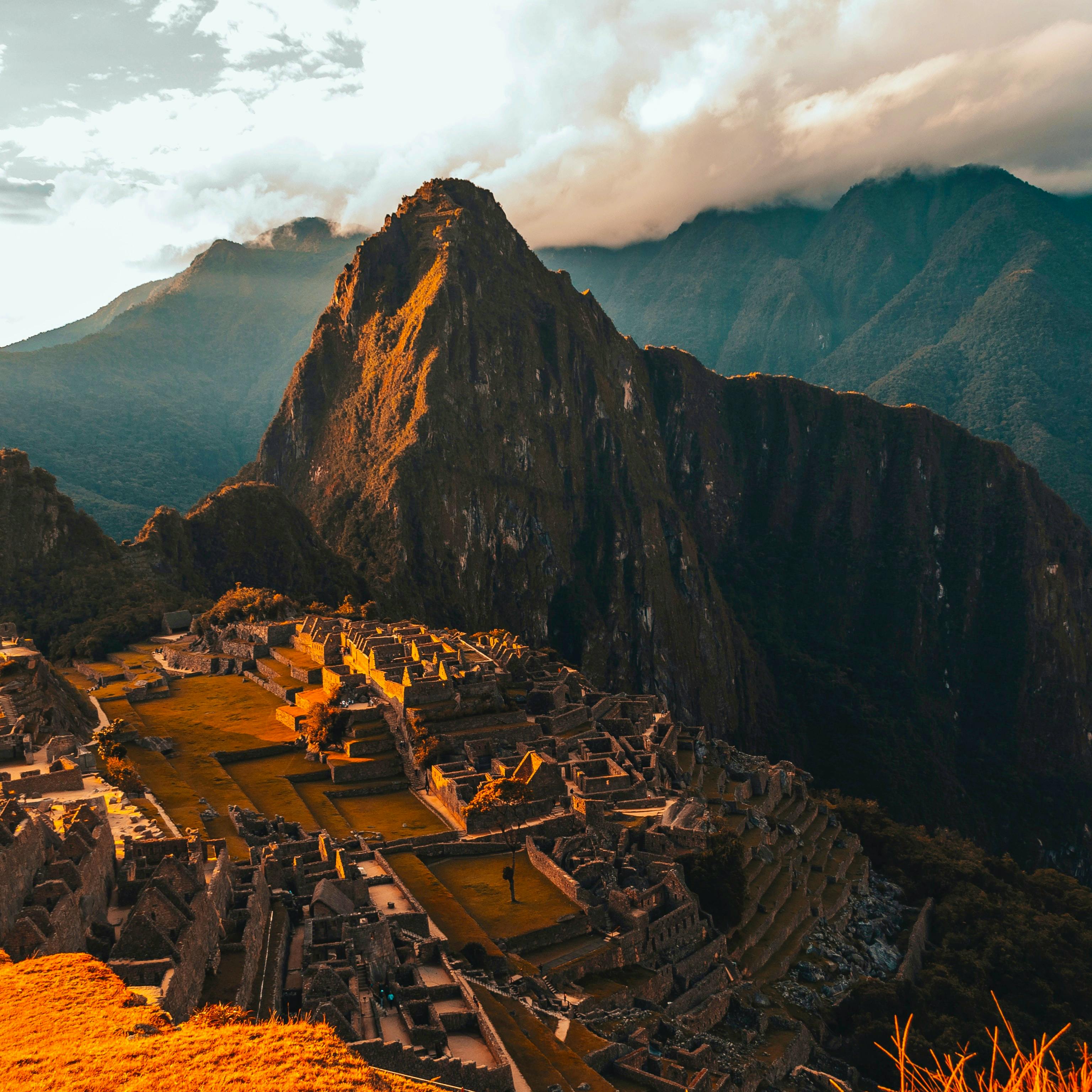
Machu Picchu Deaths: Unveiling The Truth Behind The Trails
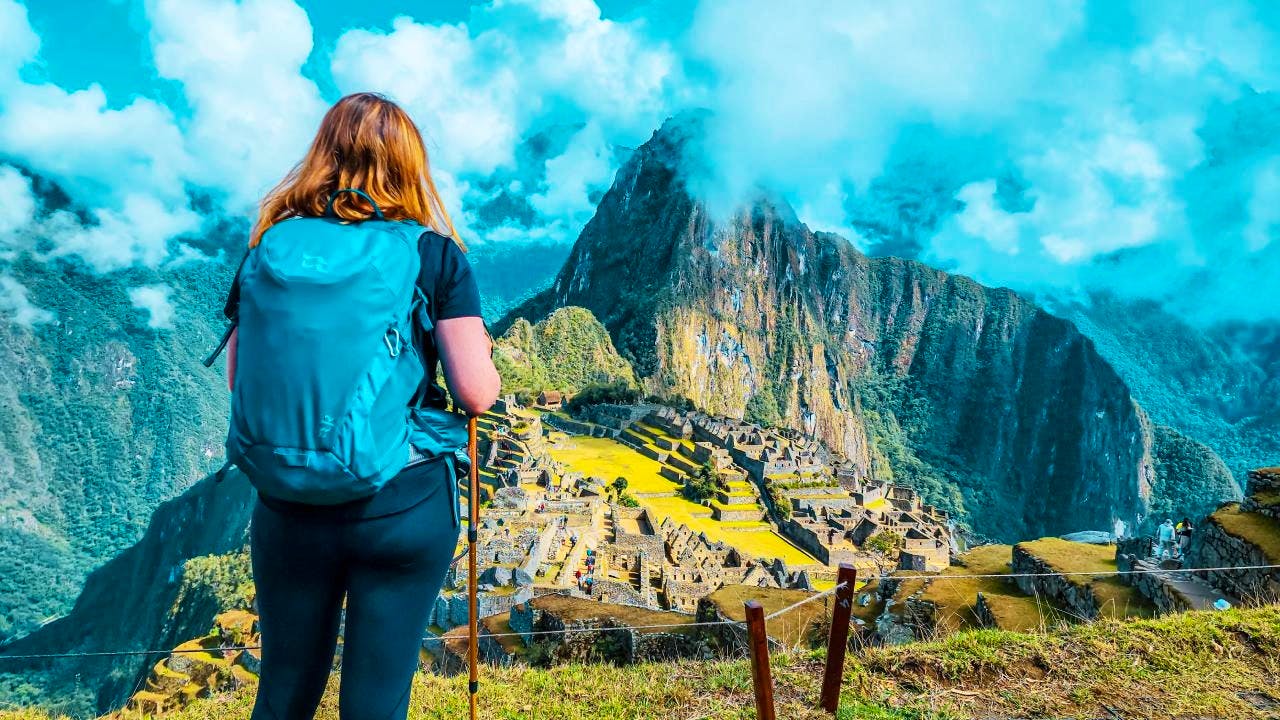
Machu Picchu Deaths Per Year: Myths and Realities
Timeline of reported fatalities: how many people died on this trek.
Late 1990s: A guide died on the Inca Trail due to an accident influenced by poor weather conditions.
2004: A Russian tourist was fatally struck by lightning atop Huayna Picchu.
2008: A British banker was found with fatal head injuries near Aguas Calientes, with the exact cause of death remaining unresolved.
2010: A landslide near the Winay Wayna campsite led to the deaths of a guide and an Argentinian tourist.
2013: An American hiker fell into a ravine close to Machu Picchu. A German tourist suffered fatal injuries from a trail collapse near Winay Wayna.
2016: A German tourist fell to his death at the Machu Picchu Ruins after crossing a safety barrier to take a photo.
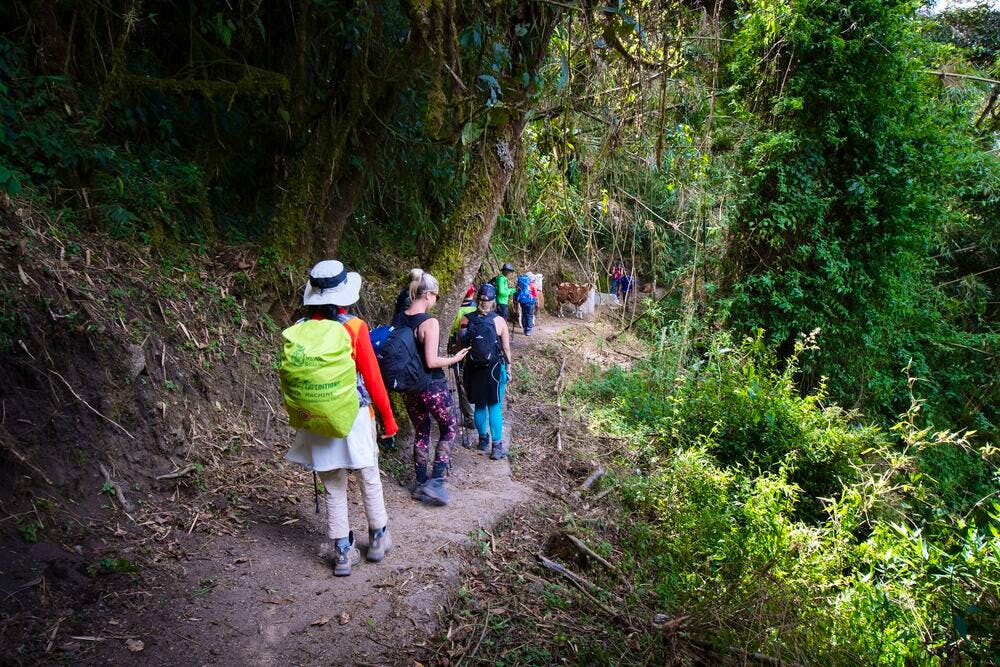
Distinguishing Between Trails and Associated Risks
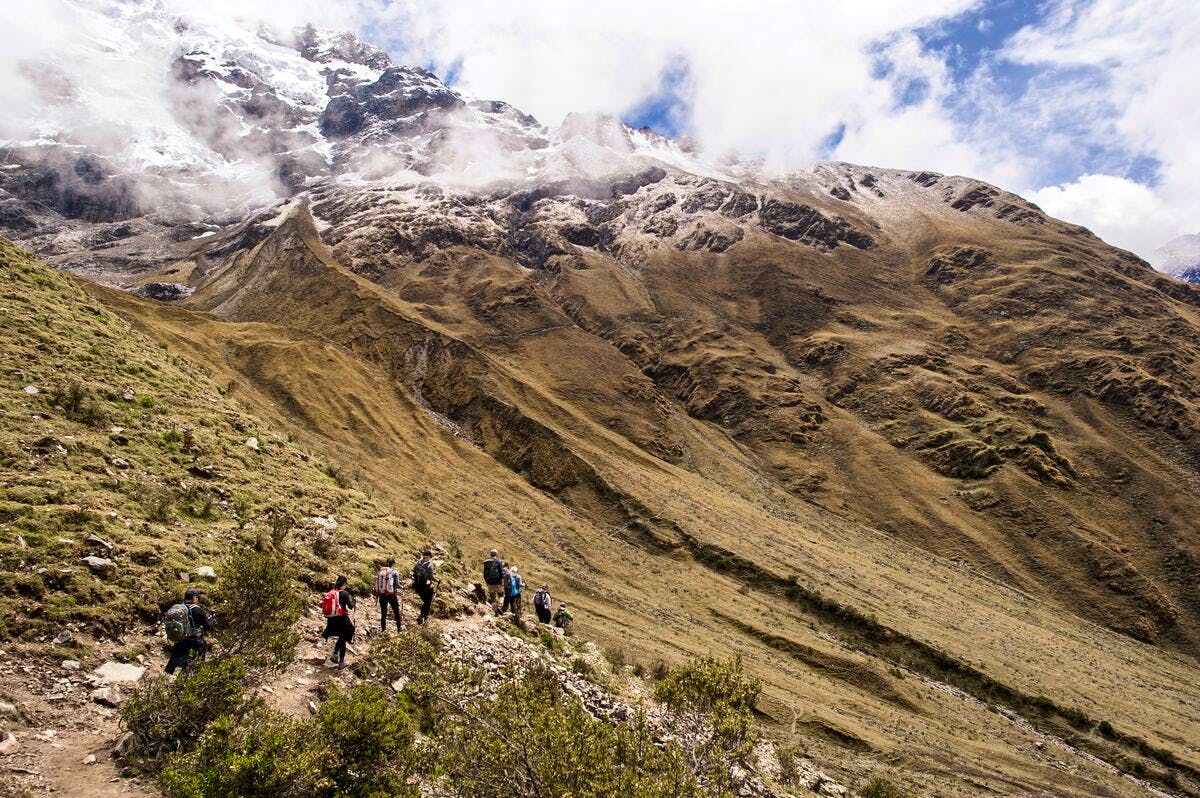
Altitude Sickness and Prevention
Arrive Early: Give your body more time to adapt by arriving in Cusco a few days before starting the trek. There are plenty of things to do in Cusco while your body adjusts.
Ascend Slowly: Increase altitude gradually over several days to give your body time to adapt.
Stay Hydrated: Drink plenty of water to help acclimatisation.
Eat Carbohydrates: Eating foods rich in carbohydrates can aid in acclimatisation.
Avoid Alcohol and Sleeping Pills: These can make symptoms worse.
Coca Leaves: Chewing coca leaves or drinking coca tea, a traditional remedy, may help alleviate mild symptoms.
Recognise Symptoms: Be aware of altitude sickness symptoms and be prepared to descend if they worsen.
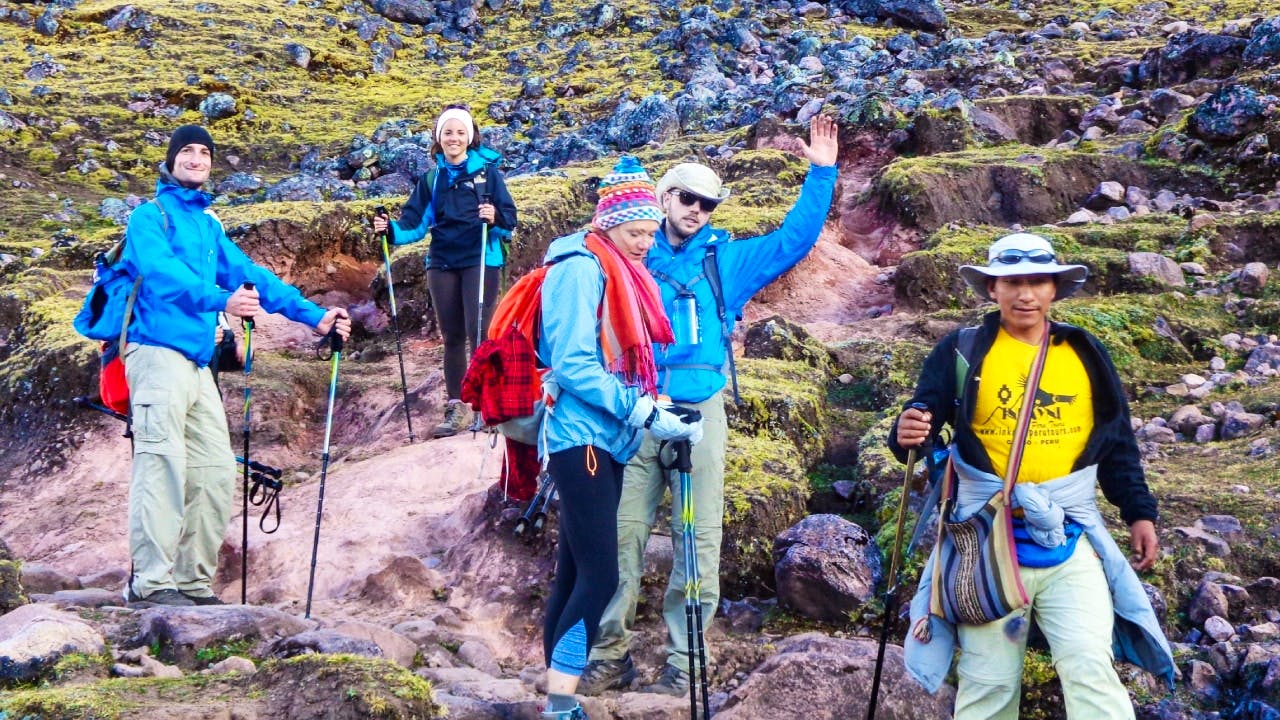
Weather Conditions and Preparedness
Footwear: Waterproof hiking boots with a good grip are necessary to navigate the uneven and potentially slick terrain.
Waterproof Clothing: A waterproof jacket and poncho are must-haves to stay dry during unexpected downpours.
Layers: Dressing in layers allows for adjustments to changing temperatures throughout the day.
Sun Protection: High-altitude sun can be intense, so sunscreen, sunglasses, and a wide-brimmed hat are essential.
Water: Pack at least 1 litre per person to stay hydrated, more if trekking on warmer days.
Insect Repellent: Especially during the wet season, insect repellent can help prevent bites.
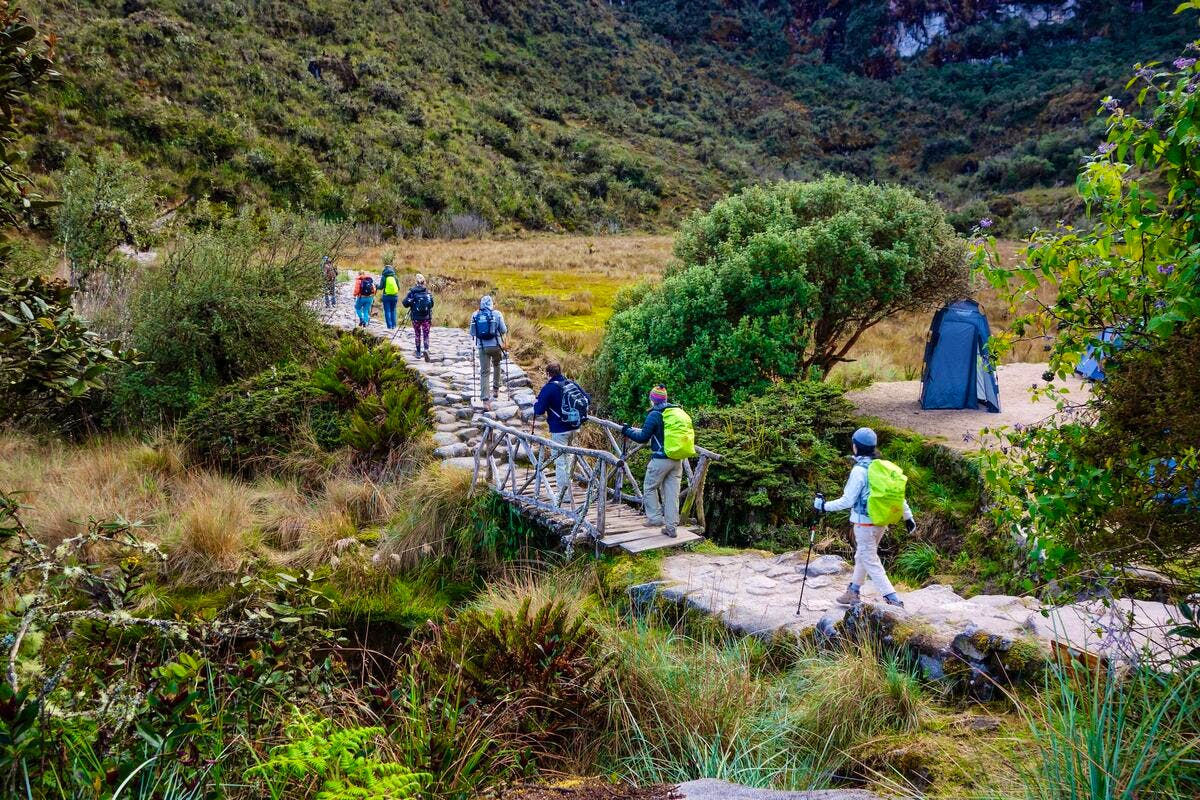
Trail Safety and Best Practices
Common hazards.
Landslides: Particularly during the rainy season, landslides can occur, posing serious risks. Stay informed about weather conditions and heed trail closures.
Narrow Paths: Some sections of the trail are narrow with steep drop-offs. Stay focused, especially when passing other trekkers or taking photographs.
Best Practises for Hiking Safely
Stay on Marked Trails: Always stick to the official paths to avoid getting lost and minimise environmental impact.
Use Appropriate Footwear: Wear sturdy hiking boots with good traction to prevent slips and falls.
Hike with a Buddy: It’s safer to trek with someone so you can keep an eye on each other and assist if someone is in trouble.
Inform Someone of Your Plans: Let a guide or someone at your accommodation know your expected return time.
Carry Essential Gear: A first-aid kit, whistle, flashlight, and a map or GPS device can be vital in an emergency.
Be Photo-Safe: When taking photos, avoid stepping back for a better angle, especially near edges or on narrow paths.
Use Trekking Poles: They can provide extra stability on uneven terrain, but learn how to use them properly to avoid tripping.
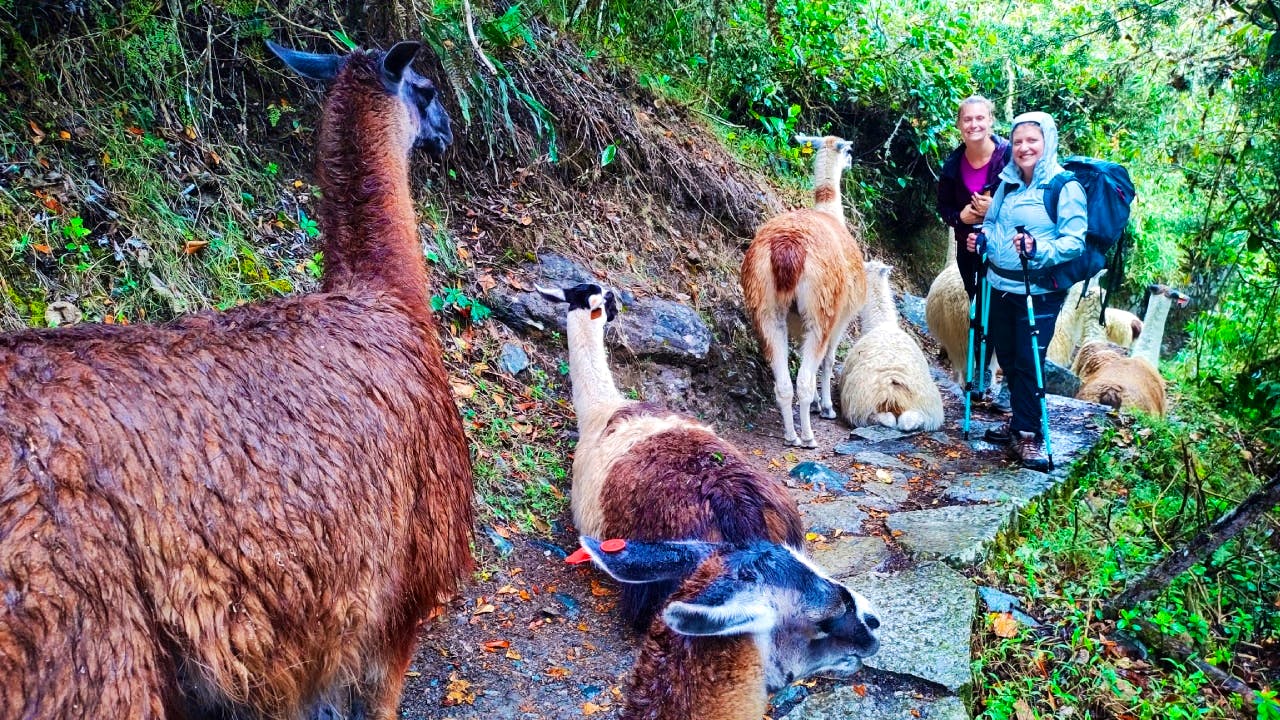
Wildlife and Environmental Considerations
Maintain a Safe Distance: Always observe wildlife from a distance. Do not attempt to feed or touch the animals, as this can disrupt their natural behaviour and diet.
Stay on Trails: Stick to the established trails to protect the environment and wildlife habitats.
Secure Your Food: Store all food items to avoid attracting animals to your camping area.
No Littering: Carry out all trash to keep the trails clean and protect the animals who live there.
Be Aware of Insects: While snakes and other potentially dangerous animals are rare, insect bites can be a concern. Use insect repellent and wear long sleeves and pants to prevent bites.
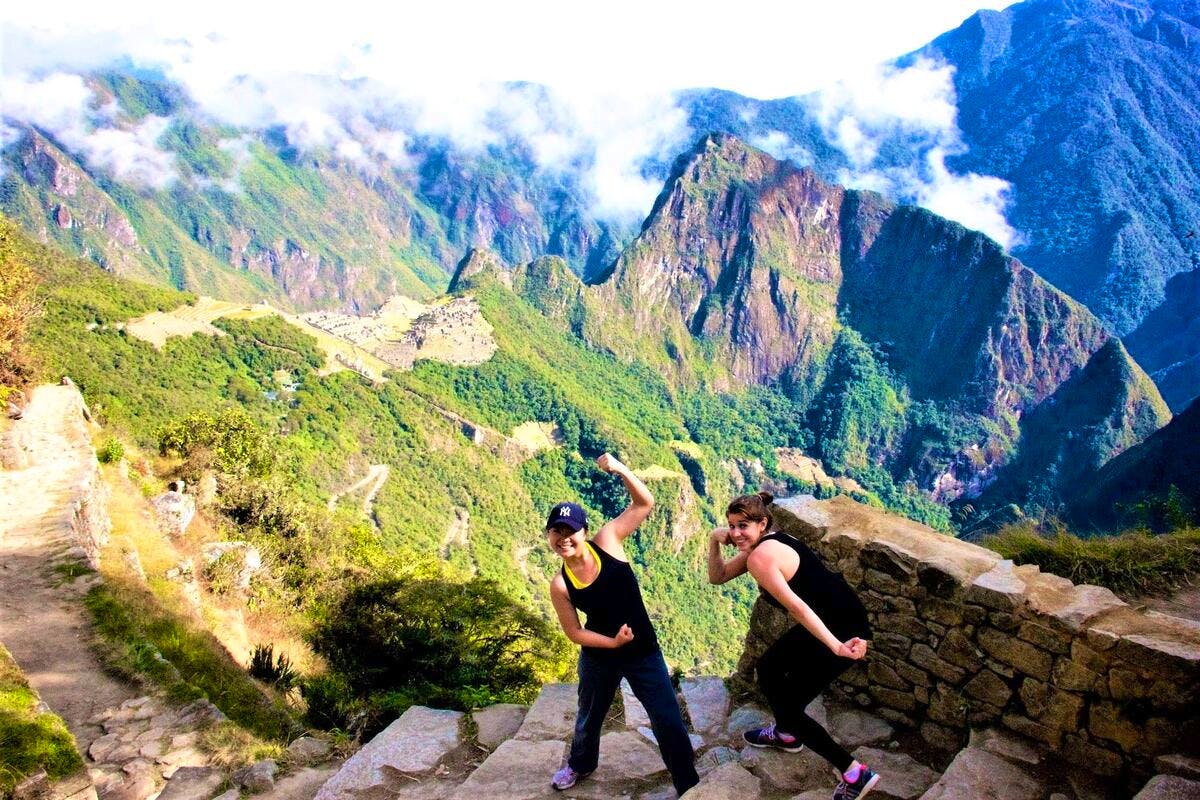
What About The Myth of the “Stairs of Death”?
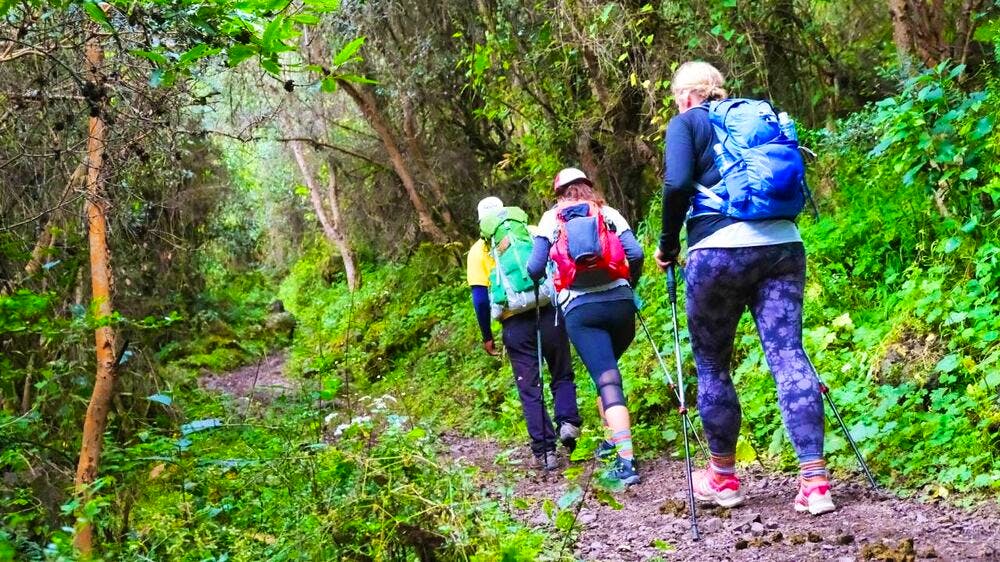
Statistics: Fact vs. Fiction
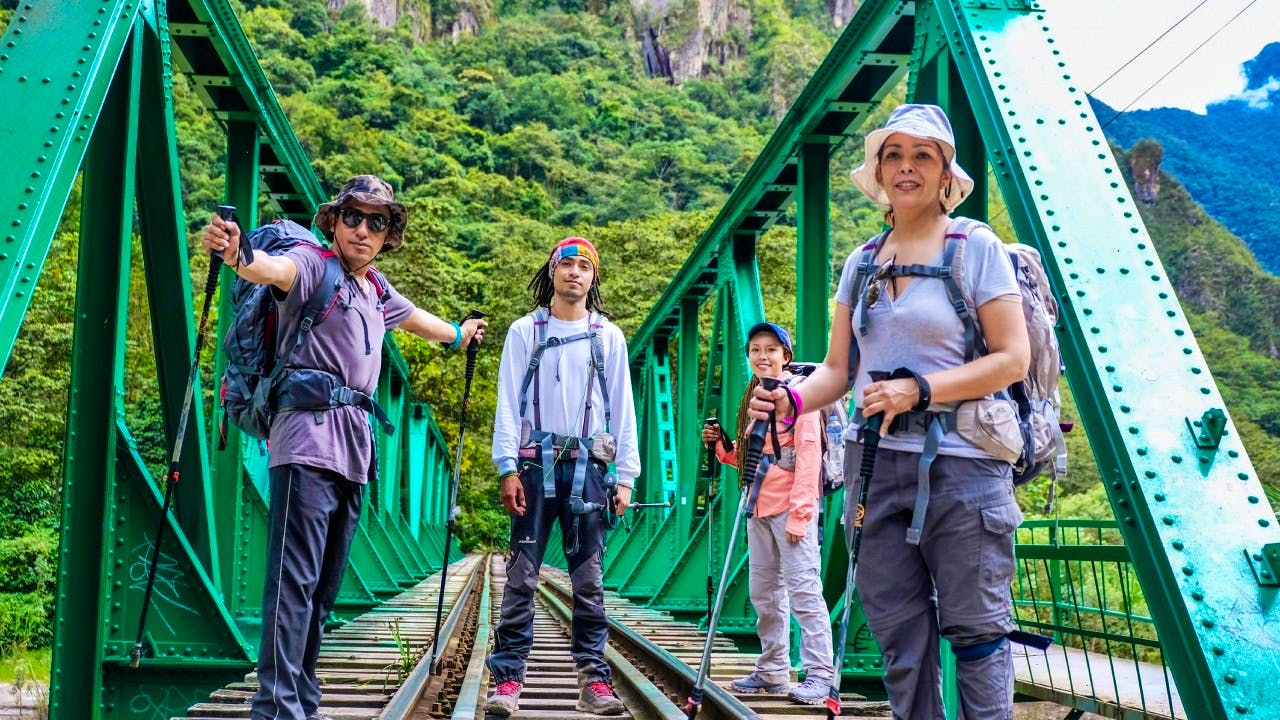
Other Machu Picchu Articles
Machu Picchu hike cost
What to see in Cusco
Train to Machu Picchu
Sun Gate hike Machu Picchu
Why visit Machu Picchu?
How long is the Inca trail to Machu Picchu?
The Temple of the Sun Machu Picchu
Machu Picchu permits 2023
Sacred Valley Cusco Peru
Popular Machu Picchu Trips on Skyhook
Salkantay trek to Machu Picchu (8 Days)
Inca Jungle Trail to Machu Picchu (4 Days)
Inca Trail to Machu Picchu (7 Days)
Classic Inca Trail to Machu Picchu (4 Days)
Salkantay Trail to Machu Picchu (5 Days)
Lares Trek to Machu Picchu (4 Days)
Short Inca Trail to Machu Picchu (2 Days)
Find your next adventure
- Travel guides
- Luxury Hotels
- Munich guides

Huayna Picchu death toll – Facts & Myths
An analysis of all reported deaths and accidents of people trying to climb huayna picchu..
Huayna Picchu is the impressive mountain behind the near mythical Machu Picchu in Peru. Millions of people come to visit the lost city of the Incas each year but only the most experienced hikers option to see the full beauty of Machu Picchu from above (here is a comprehensive guide to Machu Picchu which explains all the wonderful sites you will be able to see). Huayna Picchu (or sometimes spelled Wayna Picchu) is often named one of the most dangerous hikes on this planet, and ubiquitous are the reports of people having died climbing the imposing mountain. But is the Huayna Picchu death toll real or just an urban myth? Here is my analysis: _____________________ Still looking for the perfect accommodation. Here is my list of the best hotels in Machu Picchu
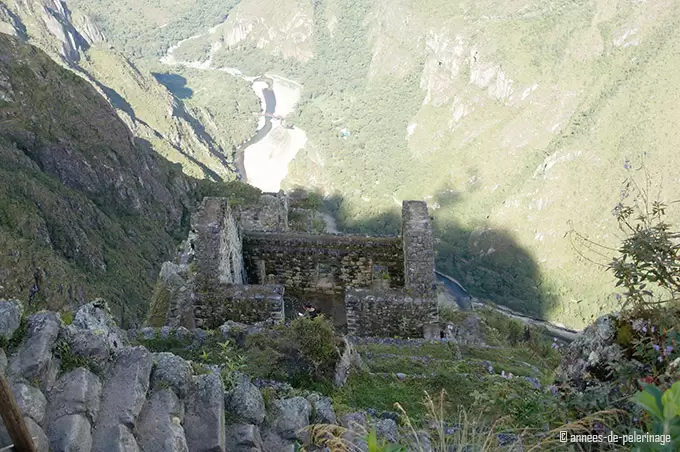
I have faced other travelers confronting me with these rumors during my stays in Machu Picchu. I have read some references to possible deaths in guide books and I have heard some rumors directly from the rangers. Above all it left me quite..shall we say worried before my first planned hike to the summit of Huayna Picchu ( read all the details how I braved the stairs of death here ). Here is a video for you to get a good feeling of what i am talking about.
If you love grizzly details, I also wrote a little article about the Dark Side of Machu Picchu , I am sure you will find entertaining.
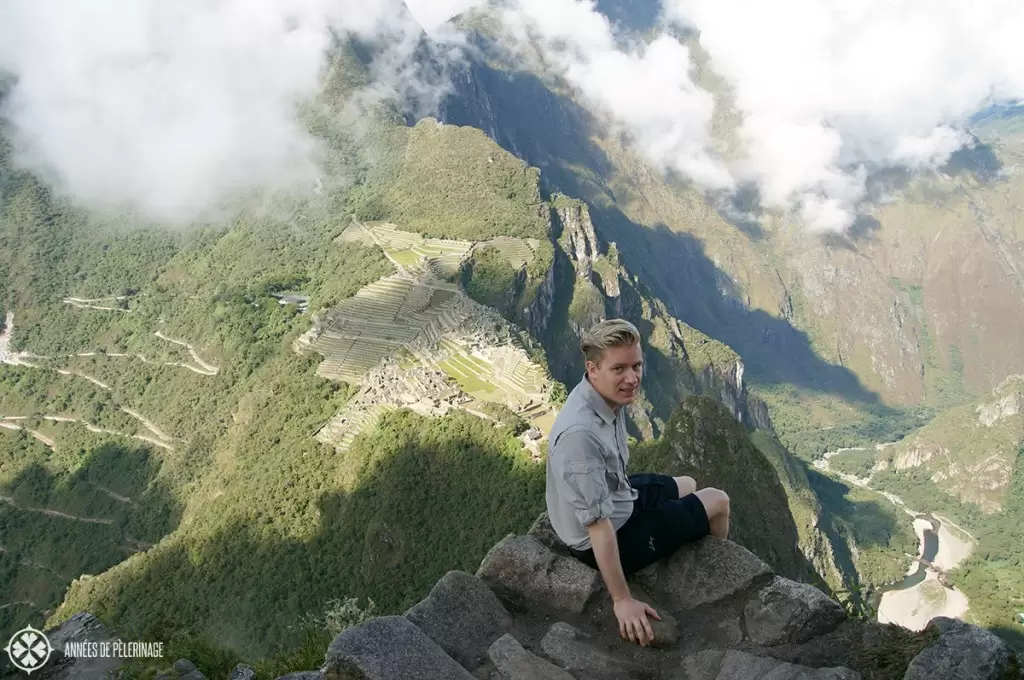
The spoiler ahead: People have died in Macchu Picchu and on the Inca trail, but I could only find 2 confirmed deaths for climbing Huayna Picchu. That’s a fact and I will share some official sources below. But with a tourist hotspot seeing a million visitors each year, the chances are statistically very high for people to die – none of these reasons would necessarily have to be related to the site itself. It also remains a fact that the hike upon Huayna Picchu IS scary and dangerous as hell.
It also might be possible that not all deaths are fully disclosed, and reports in Peruvian media are discouraged. Naturally, not all sources are available in English, so I will not be able to give a full answer either way (In case you got more information, feel free to contact me and I shall add your details below!).
Quick facts about Huayna Picchu & the stairs of death
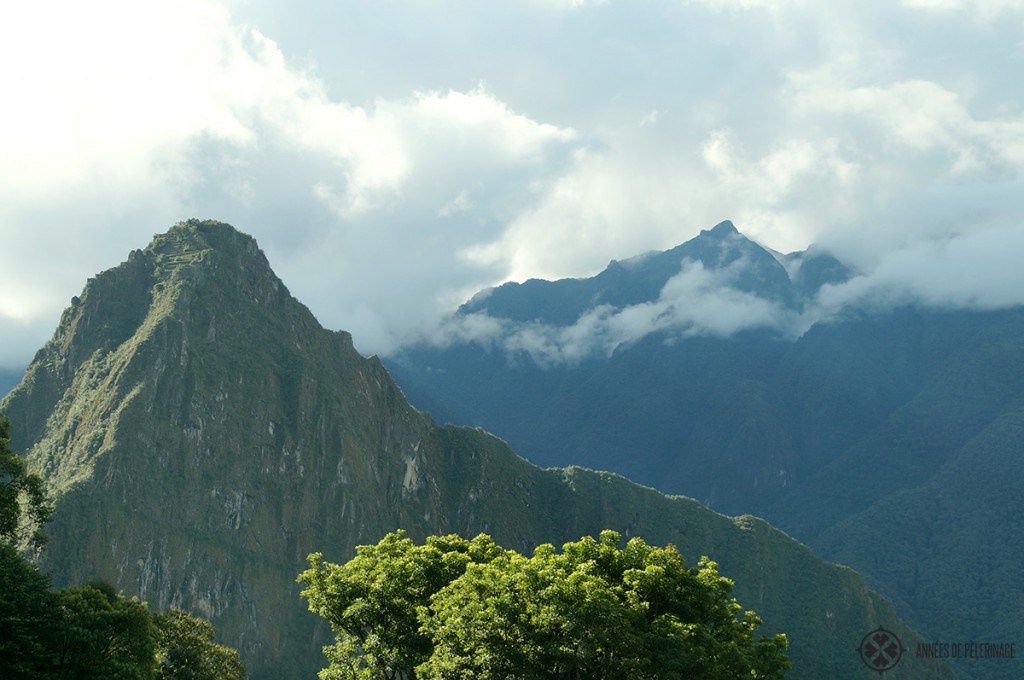
- Huayna Picchu is 2.693 meters high; 260 meters higher than Machu Picchu ( read more about altitude sickness & it’s risks here )
- Only 400 pre-registered people are allowed to climb it each day.
- Tickets are only sold together with your official entrance tickets for Machu Picchu
- There are virtually no hand rails along the hike and only a couple of safety lines
- The stairs are almost vertical & date back to the times of the Inca
- There is a very high humidity in Machu Picchu, making them oftentimes slippery – especially during the late rainy season and early in the morning (here’s a weather diagram you might find useful.)
- Also, there is quite some traffic, despite the daily limitations. Above all, the climb is almost vertical, making it theoretically possible to drop some 700 meters down into the gorge where the town of Aguas Calientes is located.
The most important fact maybe : Every tourist has to register before he or she starts the climb and will have to report back to an official after the climb. These lists are getting checked each day for missing people. There are also some rangers scattered throughout the climb, but not as many as in Machu Picchu proper. These are there to prevent accidents (and will keep an eye on the ruins as well).
Known accidents and deaths on Huayna Picchu
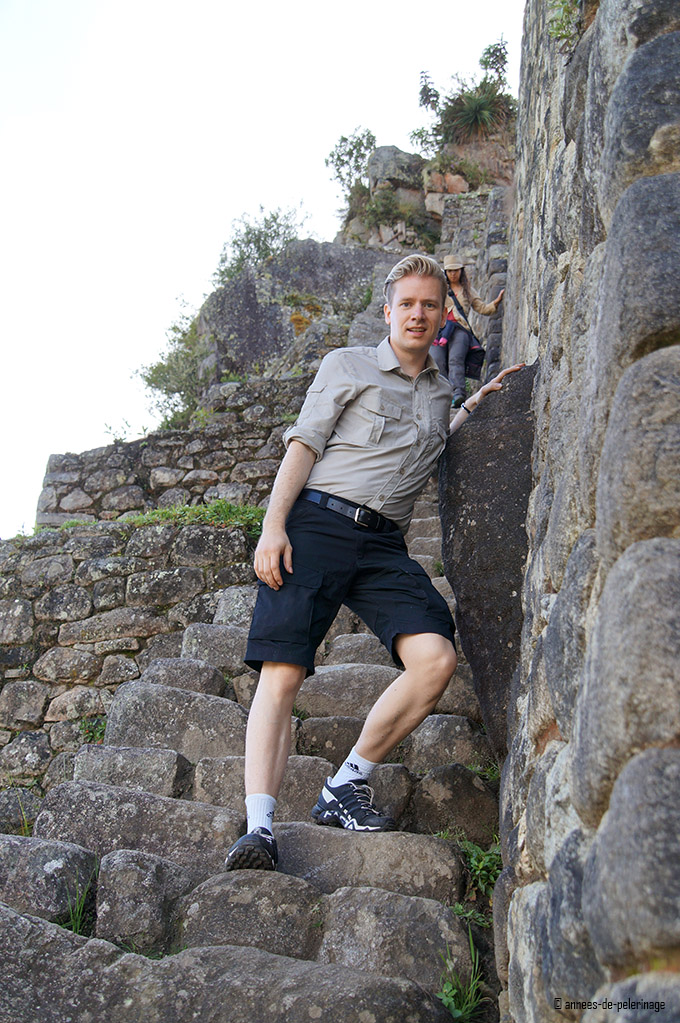
I want to be honest with you: If Huayna Picchu was located in Germany, the hike would have been closed decades ago. Not because of the death toll, but rather because it is so very unsafe. There are dangerous hikes in the Alps as well, but these hikes are not attracting 400 more or less suitable travelers looking for their perfect selfie each day. That being said, I found almost no media coverage of deaths in Huayna Picchu. I mostly found some for Machu Picchu in general. Here is the list:
- In July 2016 a German tourist died in Machu Picchu trying to take a photo
- In 2013 an American tourist called Rachel Cecilia Ianni died at age 26, falling into a ravine. This, however, did not happen on the climb to Wayna Picchu, but on the Intipunco trail towards the Gate of the sun.
- Werner Jobst Grimpen also died in 2013 on the Inca trail
- A British tourist died of an altitude sickness induced heart attack while in Machu Picchu .
- In 1998, a guide named Luis died according to Peru’s El Comerico . Could only find this online source (dead link now pointed towards http://www.andrys.com/peru28.html ), which also reports of a 70-year-old woman dying while climbing Huayna Picchu.
- In 2015, a landscape worker at the site was killed in a fall .
- In 2008, a British banker died on the Inca trail under dubious circumstances.
- A 24 years old Israeli tourist died on a zip line near Machu Picchu
- In 2010 mudslides occurred in Machu Picchu , trapping in more than a thousand travelers in Aguas Calientes. 2 People are reported to have died – again on the Inca trail.
- In October 2013 there was a fatal bus accident in the area around Machu Picchu , claiming 51 lives.
- In 2006, a British millionairess survived a 640ft fall on the Inca Trail .
- On May 2nd 2014 a man had died according to a verfied user comment here on my blog (see below). Couldn’t find any offical media reporting.
Myths about the Huayna Picchu death toll
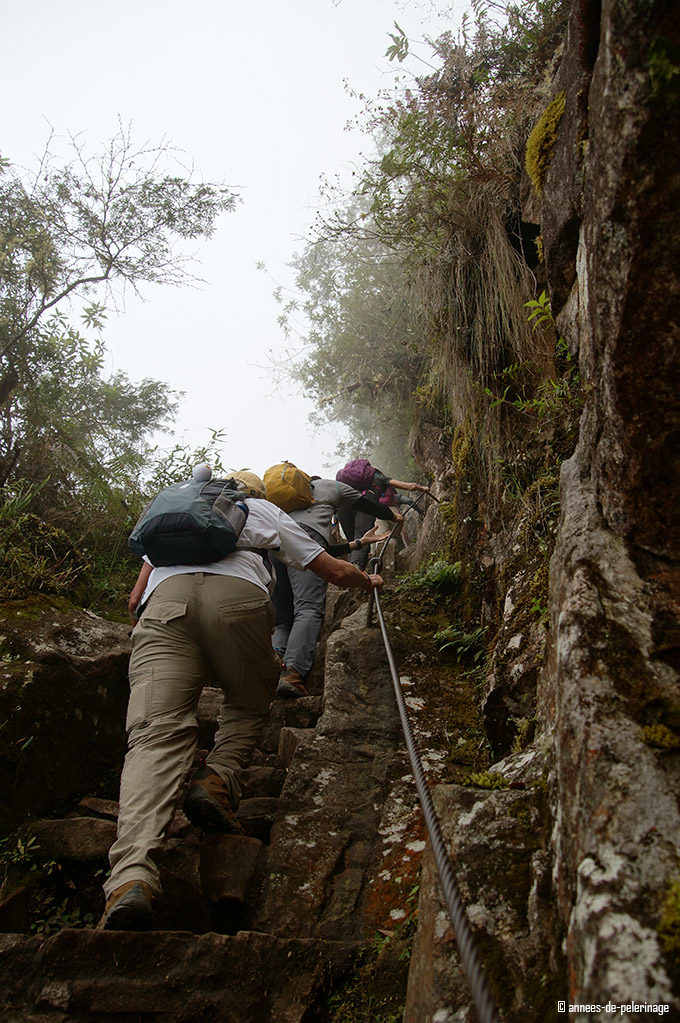
Researching for this blog post I found an incredible amount of other blog posts and newspaper articles about Machu Picchu and Huayna Picchu. The pictures and depths of information sometimes left me speechless. But I also found a lot of casual information without sources. I am not sure what to do with these. I am sure the respective authors believed them to be true, but I am quite unsure whether anyone planning hiking Huayna Picchu should value them all too much. Here is my myth list:
- A Peruvian is believed to have died on the climb but might have faked his death .
- I found one blogger claiming that the Peruvian government is not liable for these deaths, hence no official statistics. There is some corruption going on in Peru, and its most important tourist hotspot could be in the center of it all.
- I heard the rumor that one guy was hit by a lighting climbing Huayna Picchu and died. I found this guy here acknowledging that rumor. Apparently, other people have heard the same rumor – probably from the same ranger.
- Also, one guy reportedly was killed crossing the Inca bridge (not on the way to Huayna Picchu)
- This site claims that ” more than 20 deaths have occurred on Wayna Picchu in recent years ”. No source, though.
- This guy allegedly knows that over 23 people have died climbing Wayna Picchu in recent years .
I found some more sites and details, more or less regurgitating the same information, so I did not bother to mention them a second time. None of them were authority sites or newspapers anyway.
Still, I want to include a thought experiment. Let’s assume 20 people have died climbing Huayna Picchu in the last 10 years. With 400 people climbing the mountain 9 months a year that would result in a calculated chance of 0,00002 percent among all climbers. The traffic-related death rate per inhabitant in the US is almost hundred fold higher.
Combining myths and facts
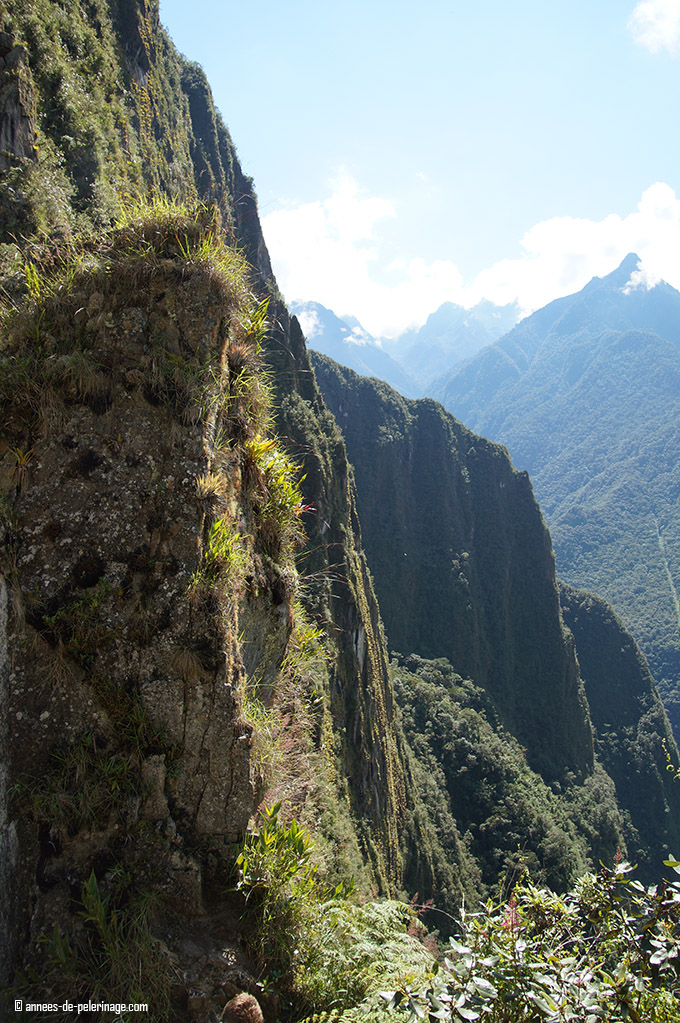
So what can I say: I did experience the so-called stairs of deaths and I really have to admit: It was scary. One misstep would have you tumbling down a couple of hundred meters. I have also seen people with bad shoes and equipment. Some people were also clearly not in a physical adequate shape to master this hike.
But I also grew up in the German Alps and I am very aware that any mountain is to be approached with respect. During the summer months of my childhood, it was a rare day we did not see the rescue helicopter flying around the area. Accidents, can, will and do happen – especially after sudden changes of the weather. Huayna Picchu is and cannot be any different. So if you are a fit and experienced hiker, Huayna Picchu will be a challenge, but one that you can master.
If you suffer from vertigo or got an unsure footing, it is very much recommended to skip this part of Machu Picchu. You can have a wonderful view of Machu Picchu from the Gate of the Sun – without that hazardous hike.
As for the reports about people dying climbing Huayna Picchu: Well clearly people have died in Machu Picchu. People also die climbing Mount Everest, the Kilimanjaro or a ladder to change that light bulb in the living room. If you are scared of these things, it is best to stay at home. But it is also quite impossible to see the world without facing some risks. I have been traveling the world for more than 30 years. Thanks to a lot of luck and some common sense I never had any serious accidents, never experienced any thefts or lost luggage, and never really regretted visiting any country. So there you have it: The world is no safe haven and Wayna Picchu is no exceptions. There is a risk attached to enjoying the beautiful view, but if you prepare well enough, you will be able to handle it.
I believe that Huayna Picchu is one of the very few places in the world, where inexperienced hikers are faced in a very direct way with the dangers of high mountains and hiking. I believe that and not actual facts, led to a lot of myth making. But again, do not underestimate this hike.
Oh and before you go, here are some more articles I wrote about Macchu Picchu.
- My ultimate guide to Machu Picchu
- The dark side of Machu Picchu
- The fabulous luxury hotel inside Machu Picchu
- All you need to know about climbing Huayna Picchu
- Also, check out my detailed Peru packing list
Last, but not least a disclaimer: I do not claim to have any insider information on deaths or accidents on Wayna Picchu nor did I witness any accidents first hand. I merely compiled a list of official and unofficial sources to clear up some facts about the Huayna Picchu death toll.
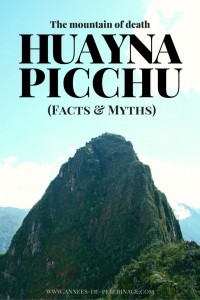
RELATED ARTICLES MORE FROM AUTHOR
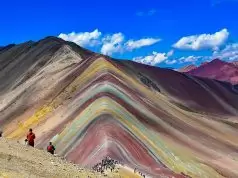
The 10 best day trips from Cusco, Peru
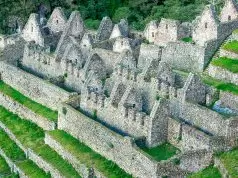
The 10 best Inca ruins in Peru
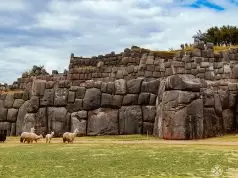
Sacsayhuamán – the amazing Inca ruins in Cusco, Peru
29 comments.
I climbed mount Machupichu last week and while at the very top, there was a fatality. A guy taking a picture slipped and fell to his death
Oh my gosh! That sounds soo tragic! I hope you did not see it :( I inserted your information into this article. Thx for pointing it out to me, even tho it is so sad!
My friend died there. He was attacked by bees. He tried to swat them away but lost his footing and fell to his death.
Hey Prince Bashin, I’m sorry to hear that and thank you for sharing here.
I once got a bee into my polo shirt in Peru and kinda freaked outmyself – luckily in a less dangerous situation.
My Australian ex husband died on the ruins in 2011. Did you not find any evidence of his death?
i am very sorry to hear that :( Sadly I did not find anything on the internet, but if you have something and want me to include it, do send any further details to me!
In the past there were many victims who got infarct during hiking Huayna Picchu in 2014 there were two european guys with infarct in the middle of the way.
Em 2016 estive em Machu Picchu que era uns dos meus sonhos e na verdade subi a montanha Hunaya Picchu sem saber ao certo qual montanha era, a subida foi difícil mas tranquila, às vezes precisamos parar pois o ar vai ficando rarefeito e a dificuldade em respirar vai aumentando devido a altura. Mas lá no topo a visão que temos de Machu Picchu é espetacular. Só fiquei sabendo qual era a montanha que subi quando desci. Nem acreditei que estive lá em cima. Durante o trajeto o guia comentou sobre mortes devido a distração em momentos de fotos. Amei Machu Picchu e Águas Calientes.
Climbed Huayna Picchu at the age of 60 with my son (26) on 31st October 2016 (a very hot day) directly after completing the Inca Trail. Quite a stiff climb; found the support/safety wires very helpful in several places. Most of the path was two-way up and down, which was annoying at times when having to wait for other people coming in the opposite direction, especially upon the narrow sections. The route of the one-way section near the summit has been changed, so one now climbs/scrambles up the Stairs of Death on the way up to the top (which felt safer than climbing down them as previously routed) and then climbs down through the pinch-point cave (instead of climbing up it). Well worth the climb for the amazing views and photo opportunities from the summit. We did not take our walking poles in to the Machu Picchu site, since the tickets stated that only elderly or infirm could take walking sticks with them, but we saw plenty of people who appeared neither elderly nor infirm walking around the site and up on Huayna Picchu with walking poles; the poles would have been extremely useful on the Huayna Picchu climb.
The beauty of Machu Picchu has always fascinated me, but haven’t quite been able to get there yet. Im very interested on what you are fortunate to do for a living. I dream of traveling extensively but not wishing to wait to retire for the opportunity. Thank you!
Can anyone confirm whether there was another hiking trail to Huayna Picchu back in 1990. I did it with 3 other travellers as soon as we arrived at M.P. after 3.5 days hiking the Inca Trail. I seriously don’t recall it being as dangerous as shown these days that’s why I’m wondering have they made a different climb.
There has always been just this trail, as the top half is basically ancient ruins. BUT the trail takes a loop around the top, on only the second leg is so jaw-droppingly scary. If you are facing Huanya Picchu, the approach leads up on the right side, and this approach is fairly moderate. You then reach the top and it loops back on the left and this is where the “stairs of death” are located. Maybe you walked back the same way you went up?
I climbed in the 1980’s and I don’t recall any stairs of death or it being overly dangerous. We went up the side facing Machu Picchu. The path went through dense smallish trees. If you slipped you would have fallen into the trees and been able to grab hold. That’s how I remember it now anyway
well there are two climbs: Wayna Picchu and Montana Picchu. Maybe you climbed the latter? That being said, the climb changed a couple of times. Only recently they actually rerouted the tour so you don’t actually get to pass the stairs of death anymore.
Yes definitely made it to the top. We have photos sitting on a stone slab seat
Rene- I did Macchu Pitchu in 1986, when you had to buy a drawing in Cusco of where the water was to be found en route! We did Huyana Pichu straight after we had explored the ruins of MP. As I recall, we simply strolled across to the far side of the site, and scrambled up a scrappy path, pulling on vines and creepers as required. We saw no scary steep steps; just kicked through undergrowth to the top, took some photos of MP from the opposing side, then scrambled back to MP, and down from there to Agua Calientes. Sounds like you did same as us.
IF your fear of heights is so much, it is difficult for you to casually walk down stadium steps. I have two words of advice:
Don’t Go!
The inca trail is nothing but steep very steep/narrow slopes. You will be miserable, and worse could loose your balance and your worse fears come true.
This is not worth the money or the time. Go to a flat, ample destination like a beach instead. Your brain will feel more like a vacation than a torture.
Thank you for your input!
Hi, i just came across your blog whilst looking for a picture of wayna picchu. I fell down the mountain in October 2008, i fell about 20ft whilst 3/4 of the way up the mountain as part of the ground gave way. I cracked my head open and have a beautiful scar now from mid-way down my forehead which curves up and around to my ear! I have videos of being stretchered down the mountain from someone in my trek group which are on youtube somewhere.
Oh my gosh Hannah, this sounds horrible. So glad you lived to tell the tale! All the best for the future and hope there’s no lasting damage!
Search “Kenneth Kahn, obituary” and you will find an article from the LA times. He died while hiking at Machu Picchu. I believe he was climbing Huayana Picchu, but haven’t found it reported anywhere else.
damn that is a LOT of text for a very small amount of facts. Well done.
My husband, 15 year old daughter and I climbed Huayana Picchu last week. I never hiked before. Bought the tickets because my husband wanted to hike. It wasn’t bad, even though I regretted while climbing up and down. Considered quitting half way through several times. Looking back, I am glad I did it. But the entire climb I was very worried about my accident prone daughter. But we all made it safely and took a guide with us who helped us pick the right spots to take short breaks when we were tired. I will go to Machu Picchu again. But will not climb Huayana Picchu again!!
And also there was a 6 year old who did the hike!
In July 1988 on a private tour, my son and I climbed Huayana Picchu after signing in at no cost. On the way down as my son turned a switchback, he saw a leg, heard screams as a Japanese women fell backwards. Their group was attempting to get a great photo. He “raced” down (as only a 15 year old would do) to alert people at the hut. A rappelling rescue team was sent up but we were told later that she had been found dead. Of course there were no newspapers or internet back then to verify any details. But our information came from people working the site as my son was the one who reported the incident.
thank you for adding this story!
I and two friends walked into MachuPicchu in 1971 from many miles away taking three days and three nights to get there over some very challenging terrain. We heard on the narrow guage steam train that several (6?) French tourists had died earlier that summer being driven over a cliff by attacking bees. Same day after beginning the hike we were told by an “official” of the district that there had been several (6?) Europeans killed by bandits in the same area earlier in the summer. Something happened for sure that summer. When we finally got to Machu Picchu the exhaustion of our extremely poorly equiped adventure convinced us to not proceed up to Huayna Picchu, because it would have been trivial after what we had just experienced. Youth is marvelous and a deceptive excuse for courage.
Hey Sherret,
thank you for sharing your story. That sounds..uh..quite grizzly!
The power developed by a person with conviction is greater than the one who only has interest
LEAVE A REPLY Cancel reply
That's okay for me
Save my name, email, and website in this browser for the next time I comment.

The latest post on my travel blog

The best things to do in Madeira, Portugal
- Terms & Conditions
- Site notice
- Data Privacy Statement

- Salkantay Trek
- Inca Jungle Trek
- Huchuy Qosqo Trek
- Ausangate Trek
- Vilcabamba Trek
- Choquequirao Trek
- Huayna Picchu
- Altitude Sickness
- Packing List
- Humantay Lake
- Lake Titicaca
- Nazca Lines
- Rainbow Mountain
- Get A Trek Quote
Inca Trail Deaths: Rare Cases Of Inca Trail Fatalities
For most people, trekking the Inca Trail is the highlight of their trip to Peru. While not particularly dangerous, there have been a few deaths on the Inca Trail. This is hardly a surprise for a trail that has been open for decades to millions of hikers.
I’ve done plenty of hikes over the years and several of them have been to Machu Picchu. And I can tell you that with good training and good mental preparation, it’s perfectly safe to hike the Inca Trail. Landmarks like ‘Dead Woman’s Pass’ make the trail sound more sinister than it actually is. Most fatalities have been due to pre-existing bad health or a freak accident. Some incidents boil down to poor judgment calls.
Either way, the risk of death on the Inca Trail is slim. I dug deep to get the real stories of people who have unfortunately died on this famous hike to give you the information you need and hopefully put your mind at ease.
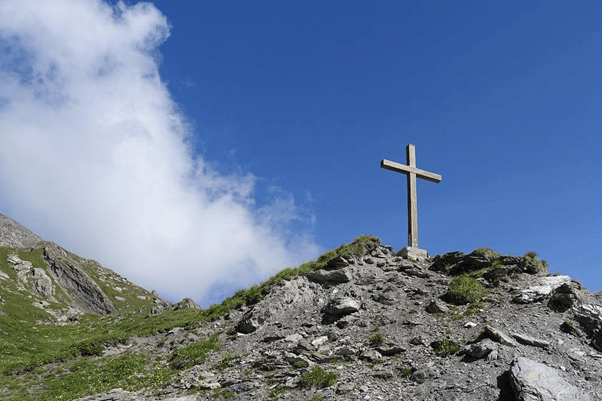
Have People Died On The Inca Trail?
Yes, some people have died on the Inca Trail. Statistically speaking, an occasional death on the Inca Trail is no surprise. With around 25,000 hikers every year, there are bound to be a few fatalities. Despite the high visitor numbers, I could only find reports for as little as 10 deaths that happened on the trail, which was surprising in itself.
So yes, people have died on the Inca Trail but there is no reason to freak out. There is less than one serious accident a year. If these numbers tell you anything, it should be that there is nothing life-threatening about this trial.
Looking for a day tour? Here are my 5 favourite day tours around Cusco:
- Rainbow Mountain day trip (with meals)
- Moray and Salt Mines Quad Bike Tour
- Sacred Valley day tour
- Humantay Lake day tour
- Machu Picchu and Huayna Picchu entrance tickets
See more Cusco day trips .
Were The Deaths On The Inca Trail Avoidable?
Some of the Inca Trail deaths were certainly avoidable and are often linked to human error and carelessness, as they would be anywhere else.
Most deaths associated with the Inca Trail are related to accidents at Machu Picchu. Most of these were falls when tourists were not paying attention to their surroundings, usually when trying to take a photo.
Unfortunately, this happens at attractions all over the world. ‘Death by selfie’ is an embarrassing but completely avoidable tragedy. On the Inca Trail, tourists are encouraged by their guides and local tour operators to stop when they want to take a picture and to always look before they step anywhere. These are certainly wise words to live by - and apply to any and every situation.
As far as natural phenomena go, no one can control these factors when it comes to Inca Trail deaths. Getting struck by lightning boils down to being in the wrong place at the wrong time. The best you can do is avoid climbing mountains during stormy weather. If you keep this in mind, the risks of a lightning strike injuring or worse, killing you, will lower significantly.
As for the landslides, these deaths could have been avoided. January is far from the best time to hike the Inca Trail . This is the wettest time of year and is notorious for landslides. If you want to avoid danger on the Inca Trail , it is best to hike over the dry season instead (see weather on the Inca trail ).
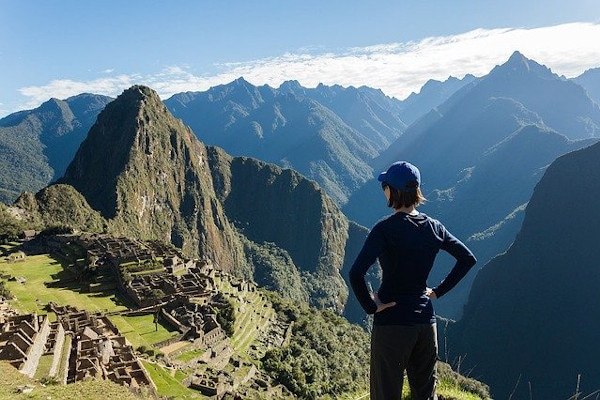
Get a Machu Picchu trek quote
Start planning your Machu Picchu hiking holiday.
Not All Reported Inca Trail Deaths Occur On The Trail
There are in fact very few deaths that have occurred on the trail itself. News reports often link accidents in nearby areas to the hiking trail.
The Inca Trail is one of Peru’s most famous attractions. The trail is synonymous with Machu Picchu and the neighboring mountain, Huayna Picchu . International media unintentionally (and sometimes intentionally) fail to make the distinction between these geographical regions.
For interest's sake, I have included some of the more widely reported Inca Trail deaths from neighbouring sites. It’s helpful to have the facts before hearing these stories from less reliable sources.
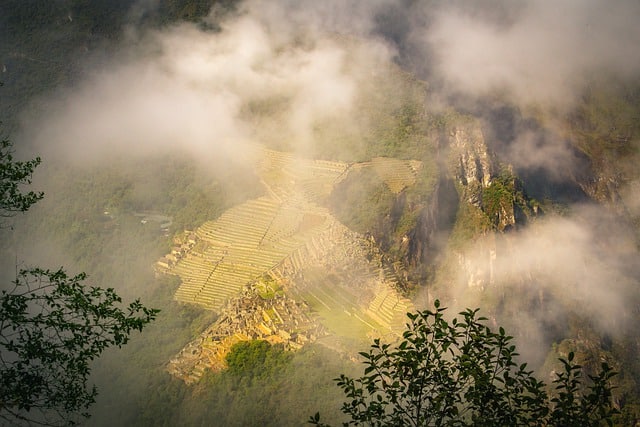
Timeline Of Peru’s Inca Trail Deaths
1998: guide dies on inca trail.
Allegedly, a tour guide named Luis died on the trail in the late 90s. It's hard to know the details as the original article in Peru’s El Comercio is no longer available. The best I could find out is that the death was a result of an accident in poor weather conditions.
2004: Tourist struck by lightning on Huayna Picchu
On October 20th 2004, a Russian tourist was struck-dead by lightning on Huayna Picchu. Eyewitnesses report that simultaneous bolts of lightning hit the 35-year-old man, who was standing on the summit at the time.
2008: British Banker Dies on The Inca Trail
On New Years’ Day in 2008, a group of 14 British tourists were camping at Aguas Calientes. The group included 44-year-old banker, Collin Murphy.
The morning of their tour, Murphy was missing from his tent. Two days later, his body was found in the Urubamba river.
Although it was initially believed that he drowned, the autopsy revealed that Murphy died from multiple head injuries . Some suspect a blow to the skull caused his injuries. Peruvian and British authorities carried out investigations. However, no final conclusion was ever made about this death.
2010: Landslide kills two people on the Inca Trail
In January 2010, heavy rains in the region resulted in multiple landslides. A tour guide and Argentinian tourist were caught in a landslide and died on the scene.
This happened near the Winay Wayna campsite . Winay Wayna is known to be particularly dangerous during the wet season
2013: American Tourist dies at Machu Picchu
26-year-old hiker, Rachel Cecilia Ianni , fell into a ravine on the final section of the Inca Trail. The American tourist was very near to the Machu Picchu site when she presumably slipped into the ravine. Rescuers recovered her body after 5 hours of searching.
2013: Werner Jobst Grimpen dies near Winay Wayna Campsite
On December 22, 2013, Werner Jobst Grimpen was walking with a friend. They were near Winay Wayna when a section of the trail collapsed. The two men were seriously injured in the fall. They were evacuated by ambulance to Cusco.
Grimpen passed away a few days later due to severe head injuries. The other hiker recovered in hospital.
2016 Tourist falls at Machu Picchu Ruins
In July 2016, a 51-year-old German tourist fell to his death at the Machu Picchu Ruins. The man allegedly asked another tourist to take a picture of him. He stepped across the security barrier for a better shot.
According to the official report by Peruvian authorities, he slipped and fell from a ledge while attempting to pose for a jumping photo. The man fell 130ft and was found dead before rescuers reached him over an hour later.
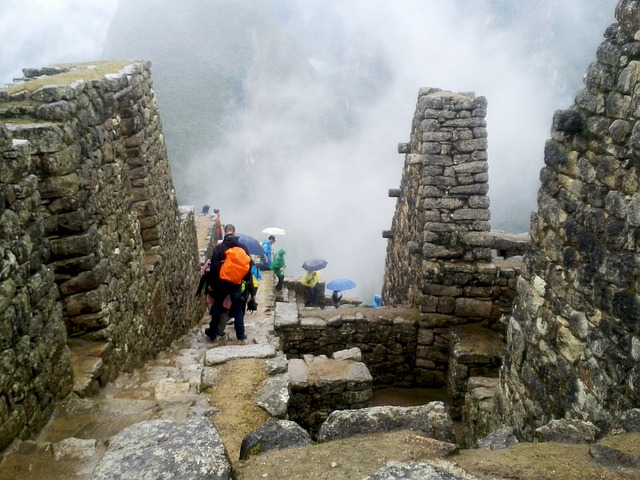
Fact Vs Fiction: Separating Reality From A Good Story
We are sure you don’t need to be told this but don’t trust everything you read on the internet. There are a lot of half-truths out there about deaths on the Inca Trail. It's hard to pick out honest details from speculation and sensationalism.
You will also hear a lot of stories about accidents on the Inca Trail around Cusco and from your guide. Our advice would be to take these ‘true stories’ with a pinch of salt.
Guides are natural-born storytellers. Don’t get me wrong, there is usually some basis for the information. Keep in mind though that details get ‘tweaked’ over years of retelling.
Thank you for reading my article on Inca Trail Deaths! Hopefully, it's convinced you not to believe in ghost stories meant to scare you but to look at the facts of these deaths with an objective eye. With the proper physical and mental preparation, there's absolutely no reason why you shouldn't be perfectly safe while hiking one of the most famous and beautiful routes in the world.
Alison Macallister
With a degree in Nature Conservation and experience working with wildlife including the Big 5, Alison works as a guide for a 5-star reserve. She enjoys sharing her passion for all things nature-related. She enjoys hiking, horseriding, 4x4 driving and kayaking.
Leave a Reply
Your email address will not be published. Required fields are marked
Name * * * *
Email * * * *
I didn't hear anything about the Inca trail but i was told by a rescue personnel at Machu Picchu that they get 3-5 fatalities a week between Machu Picchu, Huayna Picchu. etc.
Hey Jerry, pretty sure that is fake news😅 The site is strictly managed and there’s only been a couple of fatal accidents over the last few decades.
Our guide had been a porter before becoming a guide and had done the hike for 15 years. At the end of the hike he shared he had witnessed two deaths: an older man who had a heart attack on the way up to Dead Woman's Pass, and a person who fell off Huyna Picchu attempting a selfie. I think the truth is between the comment and your report because not all make the news. There are more than just these deaths, but it's still a very small percentage. I would absolutely still recommend the hike with a healthy sense of caution: don't back up near edges, stay on the trail, train and listen to your body, etc.
Get a quote from our recommended local trek operator in Peru
Best local guides. great value hikes..
- Just Me
- Me + 1
- Me + 2
- Me + 3
- Me + 4
- Me + 5
- More than 6

10 Famous Places You Should Not Bother Visiting
Posted: December 29, 2023 | Last updated: December 29, 2023
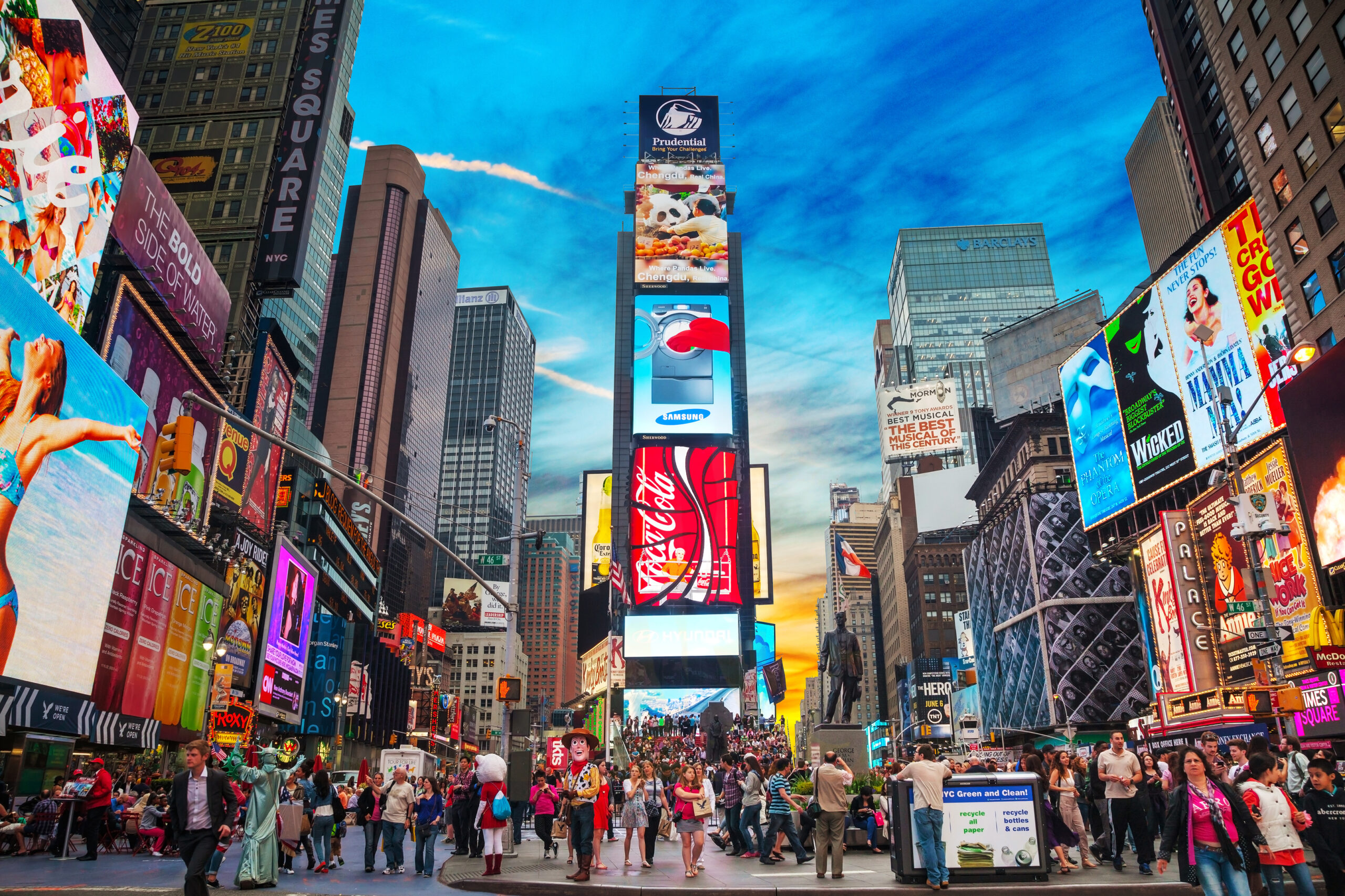
Before narrowing down an itinerary to a vacation destination that’s been on your mind, you should decipher if it’s worth your time to visit in the first place. Some places are too crowded to get a taste of the true vibe. Other places are incredibly noteworthy and intriguing, but they’re far too dangerous to visit for yourself in person.
Some places have been hyped to the extreme by people around the globe — but they’re riddled with crime, bad weather, seasonal closures, or widespread prejudice. Sometimes, it’s best to admire certain locations from a distance.
For your benefit, watch an adventure movie or two before hopping on a plane somewhere new. Seeing details about certain destinations onscreen in a movie may save you from booking the wrong trip. (Click here to discover the 19 best adventure films of all time.)
To compile this list of famous places you shouldn’t bother visiting, 24/7 Tempo consulted several travel websites including Pick Your Trail, The Travel, and Travel Triangle.
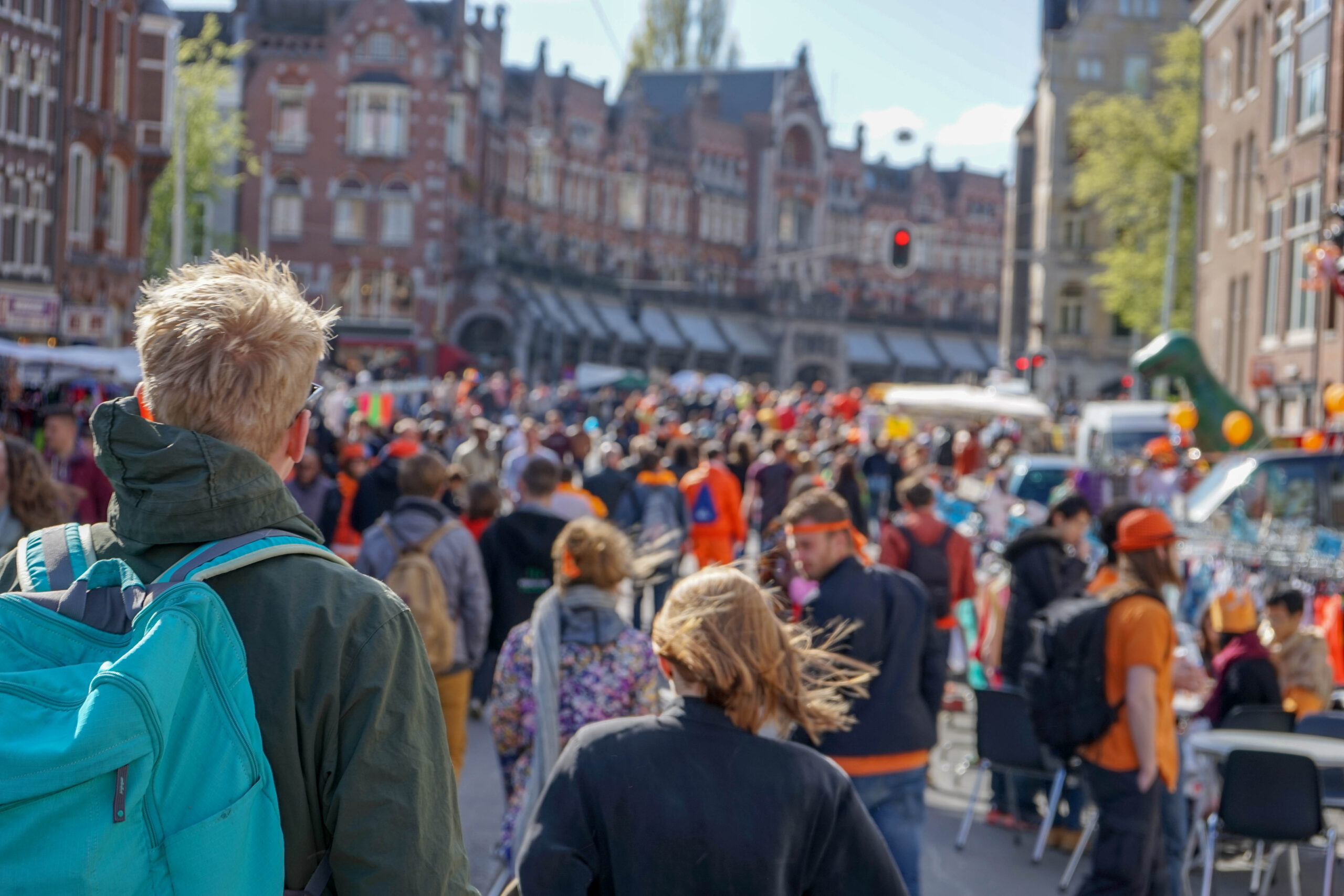
There’s much to do in Amsterdam. After all, it’s the capital of the Netherlands. A visit to Amsterdam means you’ll have the chance to lay eyes on the Museum District, which houses the Van Gogh Museum. Anyone who considers themselves to be an art buff likely has great appreciation for this particular travel destination.
Unfortunately, it’s so busy that it might not be worth it to bother. About 20 million tourists touch down in Amsterdam every year, according to some data . It is so overwhelming for locals that officials in the Netherlands have gone out of their way to block advertisements that describe the country as a tourist spot in hopes that the crowds will become more manageable.
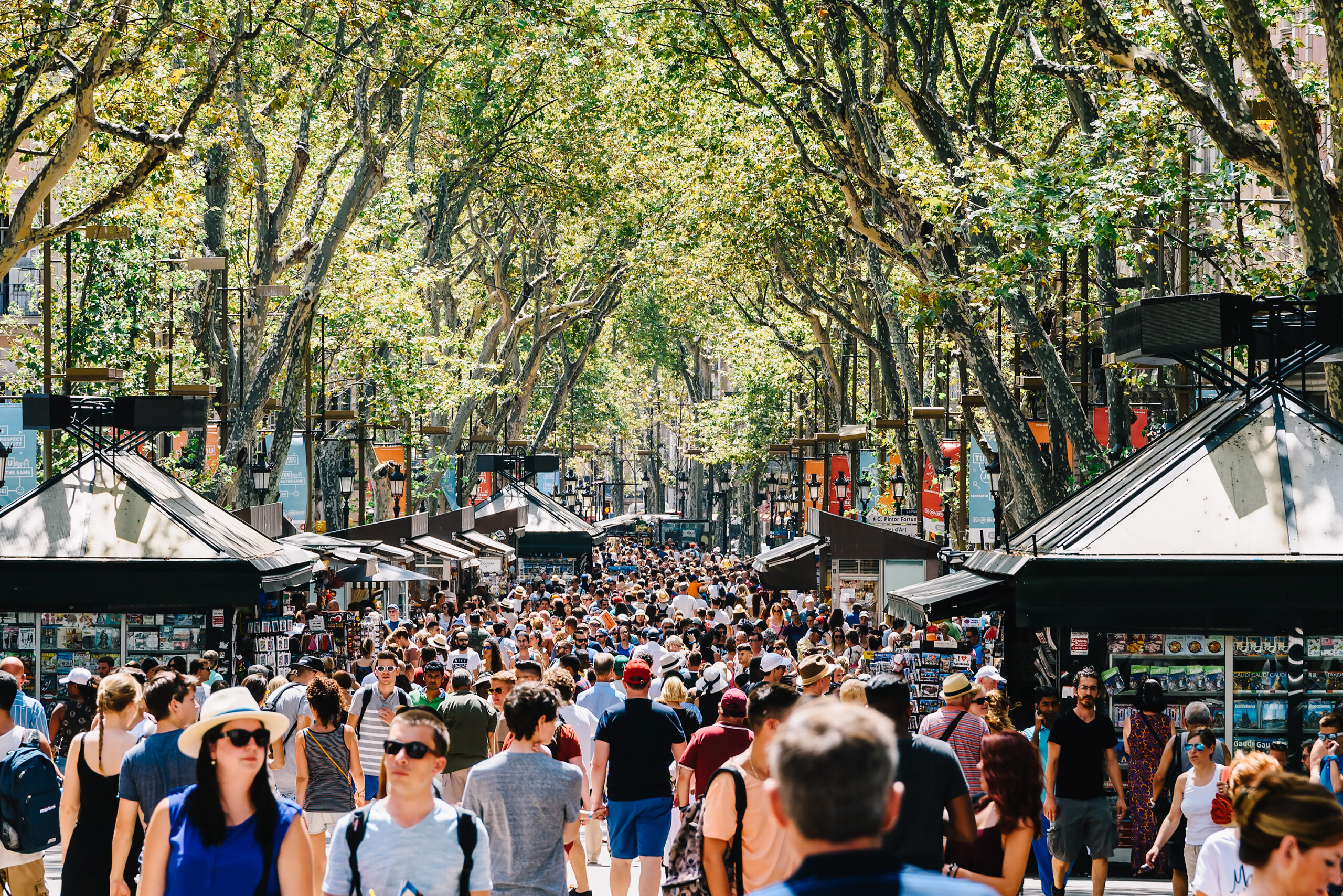
Whether you watched “The Cheetah Girls 2” on Disney Channel or not, it’s obvious that Barcelona is considered one of the top tourist destinations ever. The problem here is that there are only 1.6 million people who call themselves residents of Barcelona…and about 30 million tourists head to Barcelona every year, about 10 million of which stay for longer than just a day.
With 15 times more tourists than locals in one place, is a trip to Barcelona really worth it? When there are far more tourists than locals gathered in any place, it takes away from the true vibe of an environment.
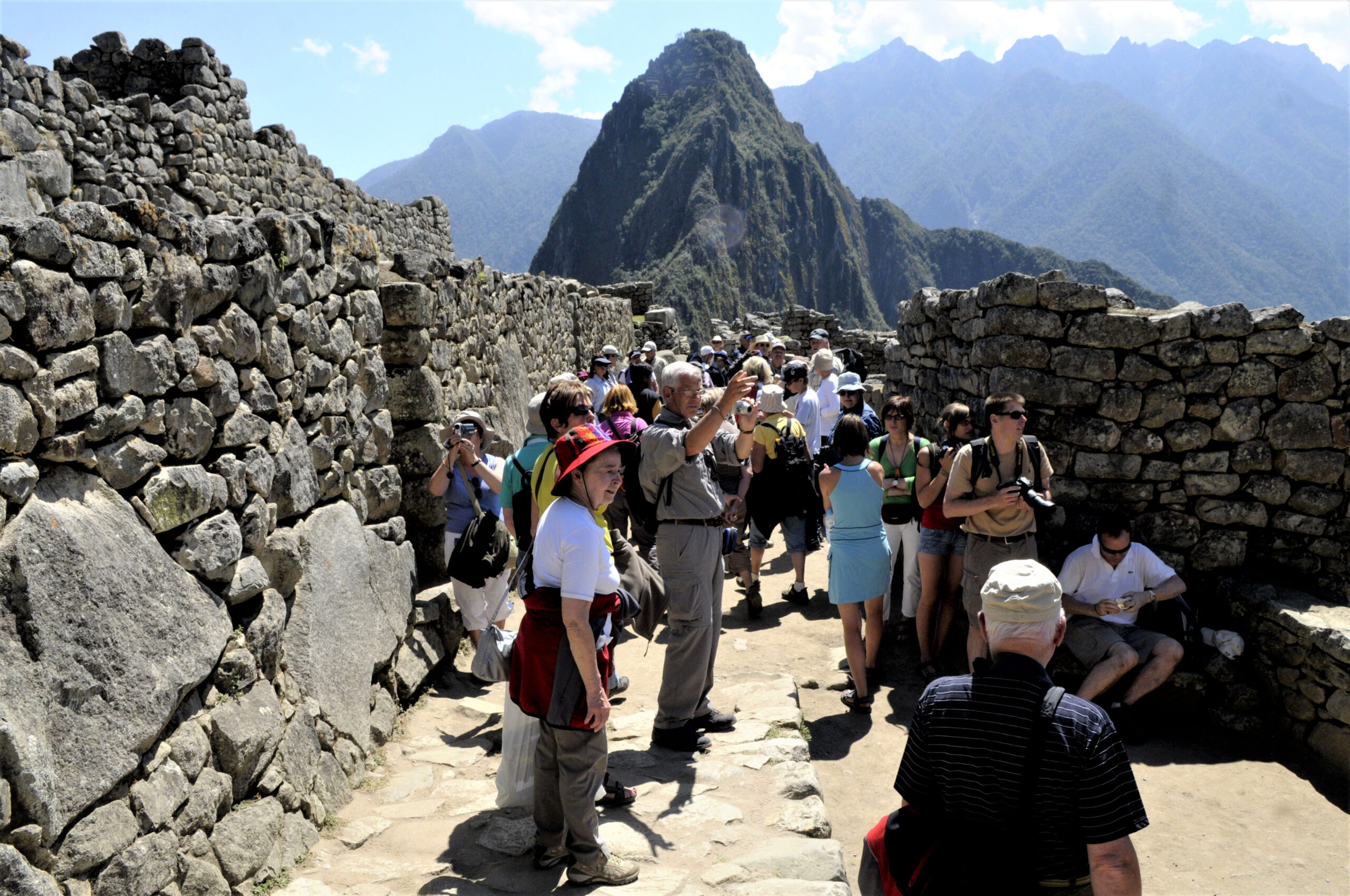
Machu Picchu
Plenty of people are attracted to Machu Picchu for the chance to admire gorgeous ancient architecture and stunning views. To be more specific, Machu Picchu is located on top of an Incan mountain in Peru. It’s a citadel that garners attention from people all over the globe.
The recommended daily limit of guests at Machu Picchu is 2,500. Recently, more than 5,000 visitors have been making their way up to Machu Picchu every single day. For this reason, it might be best to skip a vacation in Machu Picchu and choose a less populated spot. (In an effort to recoup tourism revenue lost during the beginning of the year, Peru is raising the daily limit on visitors to Machu Picchu from its previous cap to 5,600 people per day. This measure aims to account for the economic impact to the popular destination from having fewer international travelers over the past few years.)
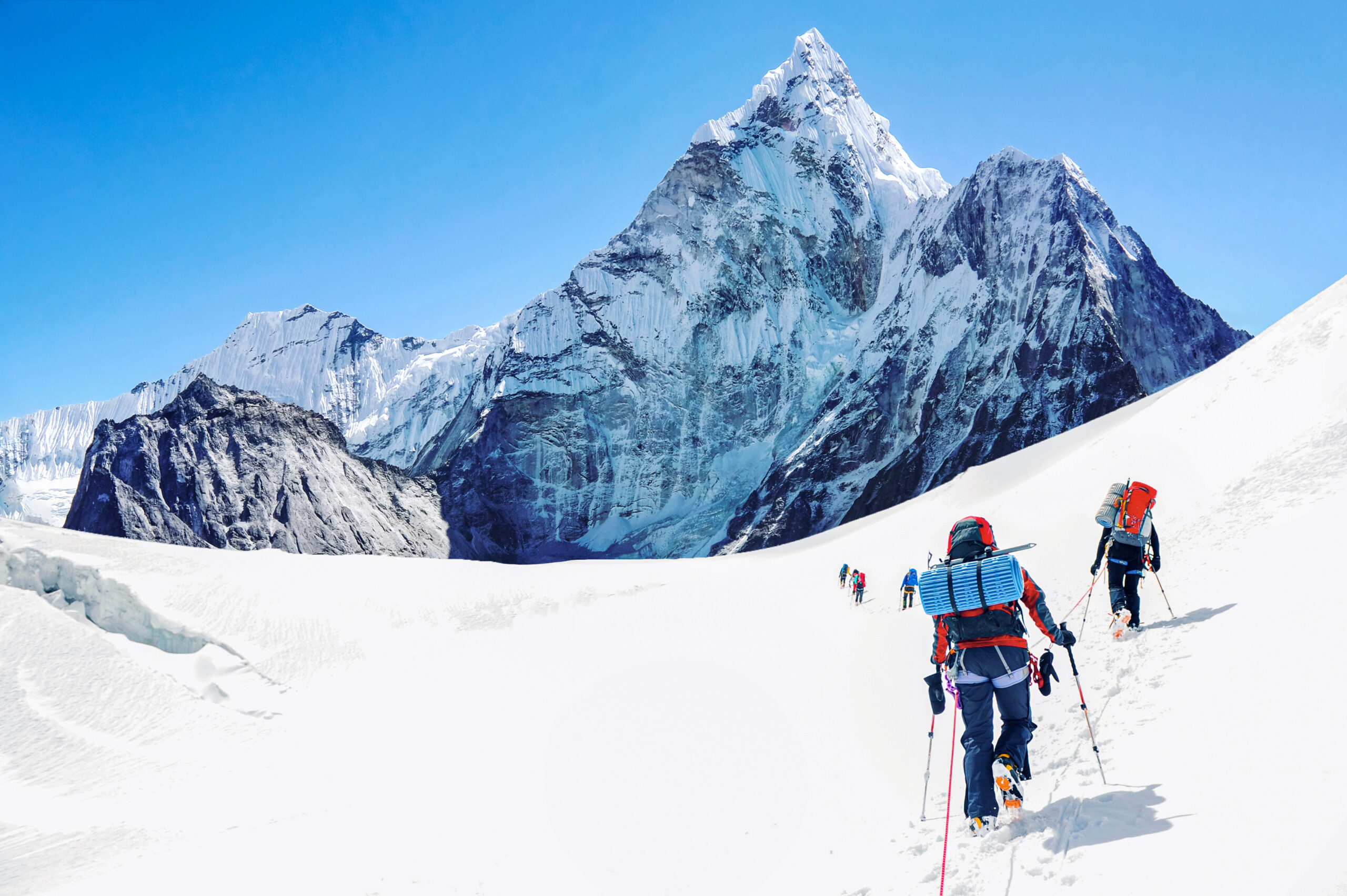
Mount Everest
The idea of climbing Mount Everest might sound intriguing if you appreciate the great outdoors. That doesn’t mean this is a place that should be added to your list of destinations to visit, though. Mount Everest is actually quite dangerous with terrible statistics backing it up.
Around 1,200 explorers attempt to make their way up the mountain every year, but only half of them make it to the top. Some climbers have died trying to complete the mission. Hypoxia is a fierce threat while climbing Mount Everest, since there are freezing temperatures and low oxygen levels. It’s been estimated that there are over 200 dead bodies scattered around Mount Everest at this point in time.
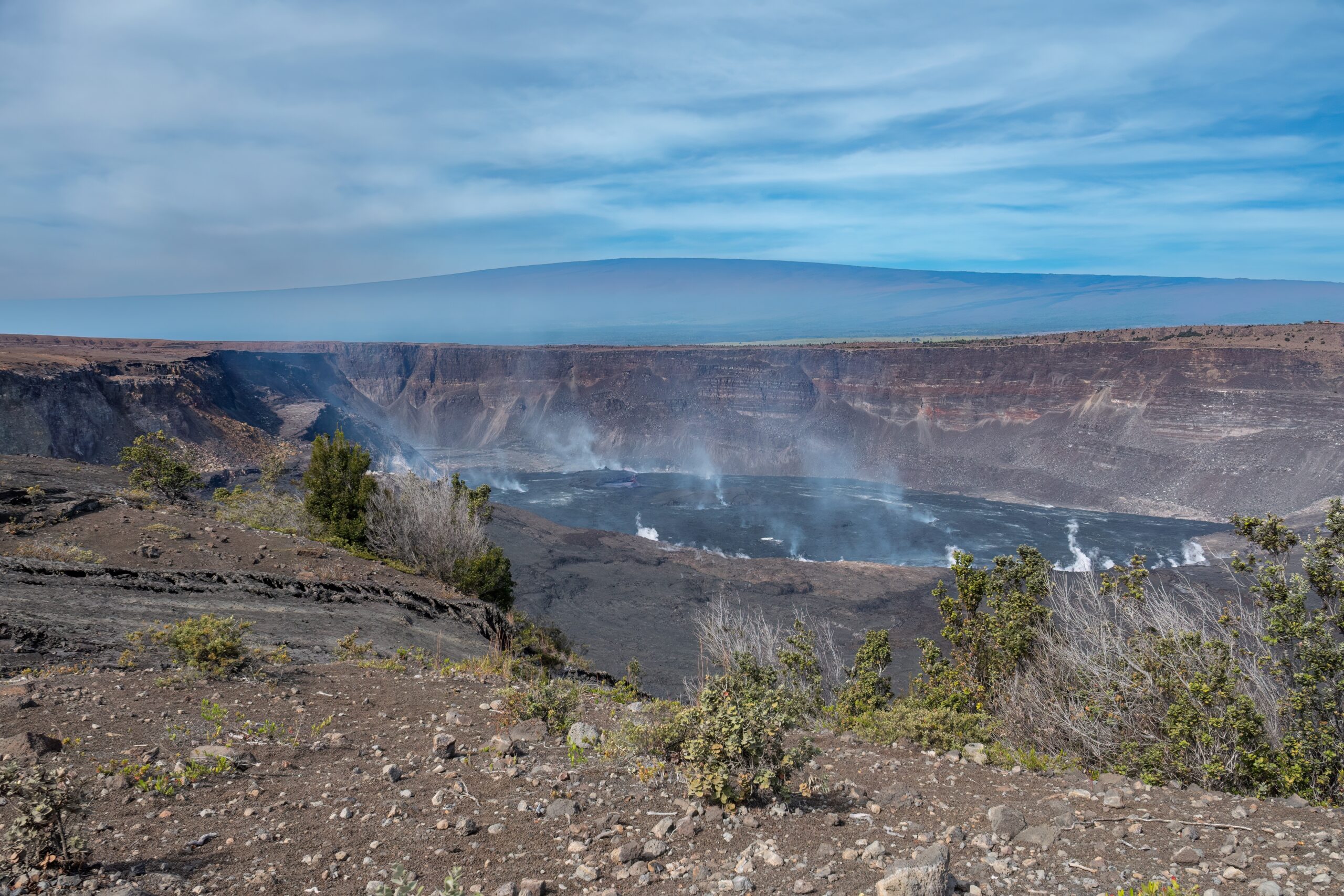
Hawaiʻi Volcanoes National Park
Visiting the islands of Hawaii isn’t a problem if you know where to spend the majority of your time. Hawaiʻi Volcanoes National Park, in particular, isn’t the safest place to go despite how well-known and popular it might be. We already know Hawaii has a reputation for active volcanic activity. The poisonous gases floating through the air at park are way too toxic at times for anyone to safely breathe in. On top of that, there’s often smoky ash filling the air around the park.

Volusia County, Florida
There are plenty of beaches to visit in Florida, so there’s no reason to spend your time visiting Volusia county. Although Florida is known for having some of the most exquisite and wonderful beaches in the United States, there have been more than 330 shark attacks in Volusia County since 1882.
For some perspective, this number beats the number of shark attacks in South Africa. Volusia County is famous for being the “shark attack capital of the world.” For some reason, its reputation hasn’t stopped swimmers and surfers from taking a dip.
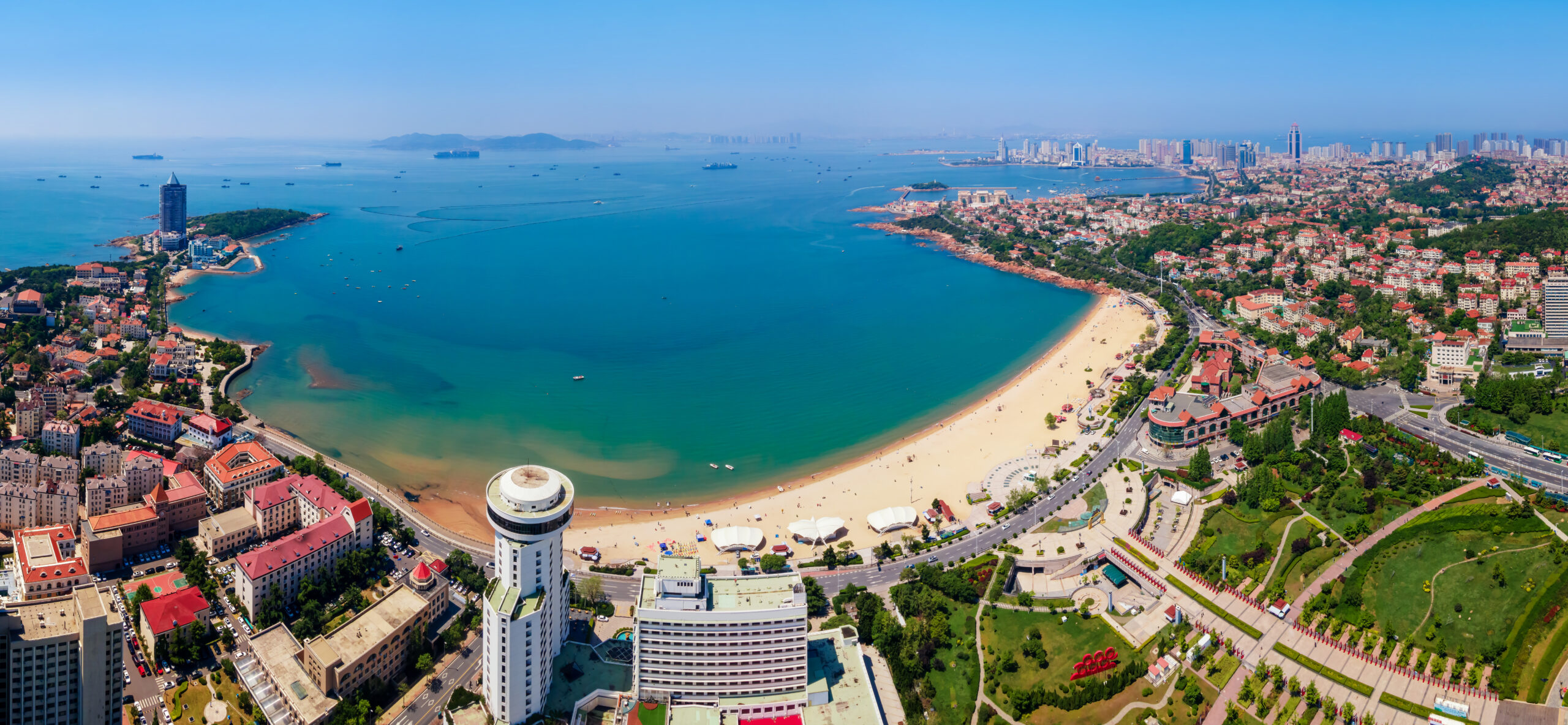
Qingdao Huiquan Beach
Qingdao Huiquan Beach is located in Qingdao, China. Checking out the beaches of China might sound like a dreamy adventure, but this particular beach is way too crowded to be much fun for anyone. Around 130,000 people make their way over to Qingdao Huiquan Beach every single day.
Since the beach is so close to the city, the proximity is one of the main reasons it’s so popular. It’s also totally free to visit this beach without any admission fees. People trying to save money while enjoying themselves will typically consider Qingdao Huiquan Beach to be a prime vacation destination. It’s not worth your time if you don’t have enough space to lay a beach towel down.
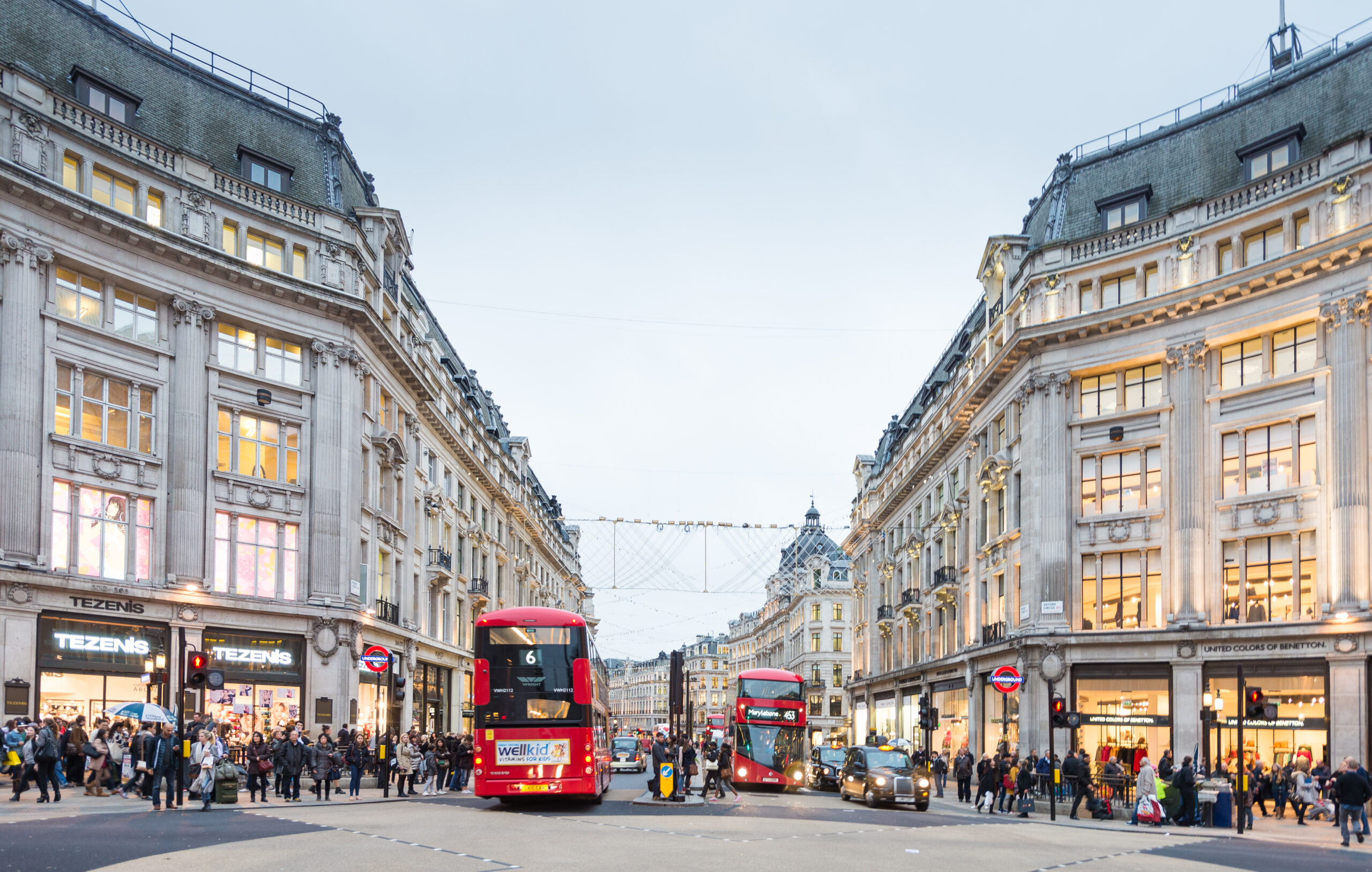
Oxford Street in London
Spending time in London means you might have a chance to pass to Oxford Street. This is the busiest and most crowded street in the United Kingdom. Since the street is full of so many random people, there’s a chance visitors will get pickpocketed by strangers bumping into them at any given moment.
You have to be highly vigilant and protective of your belongings to make sure you don’t get robbed. Since Oxford Street is bustling with folks on foot from morning tonight, it’s been projected that the street will become entirely pedestrian soon enough. This means there won’t be room for vehicle traffic including buses or taxis anywhere in the area.

Musée du Louvre in Paris, France
The Musée du Louvre in Paris, France has a reputation for being one of the most beautiful and romantic places in the world. Fortunately, there are plenty of places you can visit in Paris that are less crowded and just as beautiful and romantic. The reason this spot is so overpopulated is that some of the most beloved art pieces in the world can be admired while spending time there.
The Mona Lisa, which was painted by Leonardo da Vinci, is housed in the museum. In 2022, 7.8 million visitors went out of their way to reach this destination. Talk about a bustling place to be!
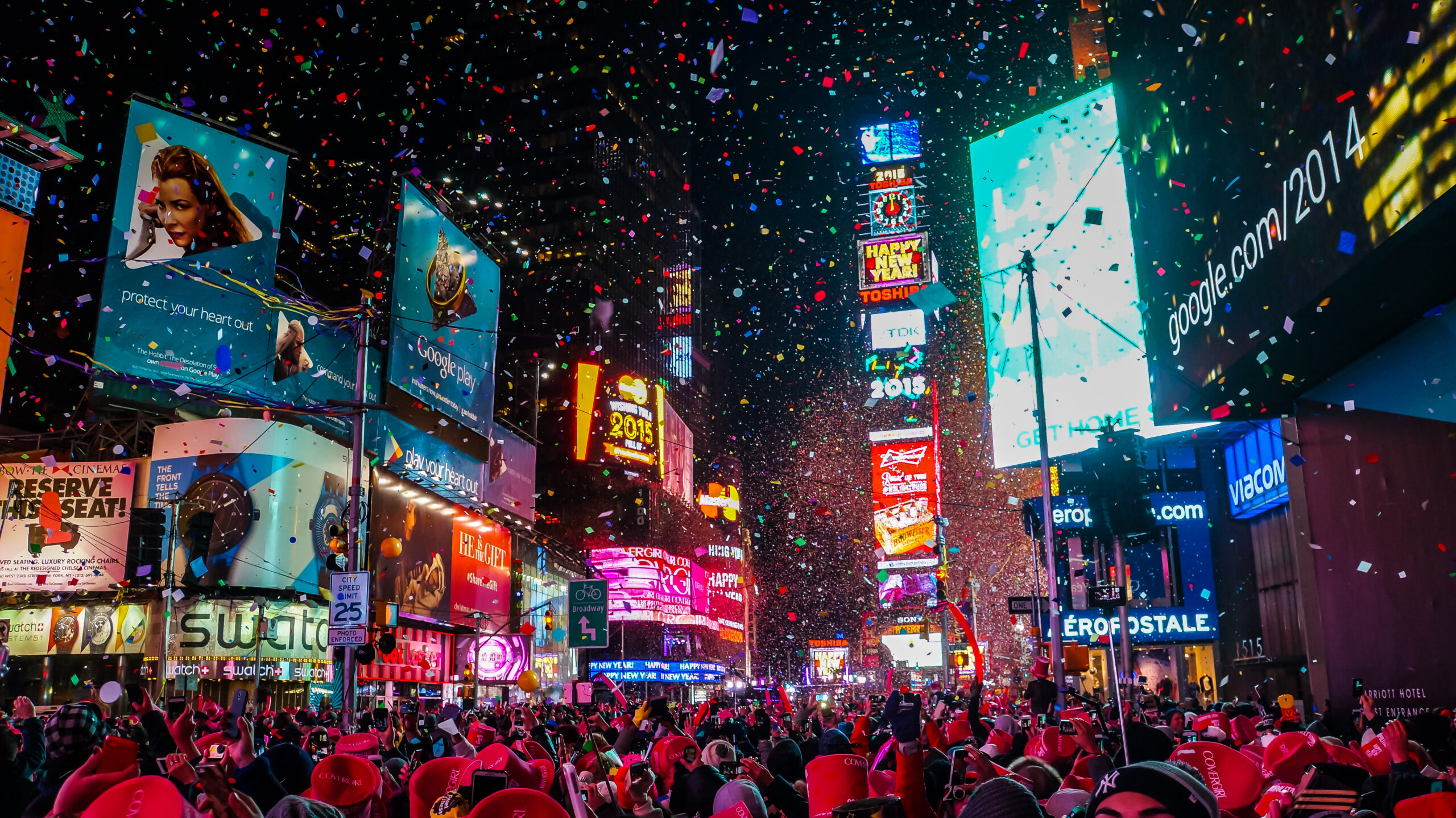
Times Square in New York
Is a trip to New York City complete without walking through Times Square? It might have to be if you’re planning to visit New York soon. Since Time Square is so overcrowded, it can be uncomfortable to get from point A to point B while you’re there. On a daily basis, over 300,000 people trek through Times Square to go shopping, take pictures, and socialize with others.
Time Square is where the ball drops on New Year’s Eve every single year. It’s full of brand-name stores that sell designer products, Broadway shows, and characters in costume for photo opportunities.
Fortunately, New York doesn’t end with Time Square and there are still plenty of different things a visitor can do without dealing with the stress of such a massive crowd. While we’re on the topic of New York, click here to find out about 19 things New York is famous for.
More for You
Facebook wrongly labels photographs of Auschwitz victims as showing ‘bullying’ and ‘nudity’
Explorer Reveals Ernest Shackleton's Perfectly Preserved 116 Year Old Hut In The Antarctic
New doc uncovers racism and inappropriate behavior at popular retailer
Top 10 Times Bill Hader Broke The SNL Cast
The ripeness of a banana could affect your health
Burger King's menu adds a new twist on a British classic
20 animated films that viewers found super scary
"This is the lowest I've felt since I've been here" - Larry Bird after being humbled by the New York Knicks
David Chang and Momofuku will no longer enforce 'chili crunch' trademark
Anheuser-Busch has ‘learned their lesson’: Former exec Anson Frericks
Therapists Say These 6 Common Habits Are Fueling Your Anxiety
The Only 2 Ingredients You Need For Luscious Fudge Cookies
14 Movies That Aren’t Classified as ‘Scary’ but Still Give Us the Creeps
Caitlin Clark Makes Fashion History in Prada at the 2024 WNBA Draft
'We got it wrong': WeightWatchers CEO on weight loss
Republicans Suddenly Cancel Multiple Bills
Ex-Google recruiter says LinkedIn 'open to work' banner ‘is the biggest red flag’—some career experts disagree
High-Protein Vegetables to Eat on a Regular Basis
20 facts you might not know about 'The Little Mermaid'
Groundhog Day Was Painstakingly Planned, Except For One Improvised Scene

IMAGES
COMMENTS
A German tourist has died while trying to take a photo atop Machu Picchu. The tourist, identified by the BBC and Peruvian media as 51-year-old Oliver Park, died Wednesday after slipping from a ...
A 51-year-old German tourist died Wednesday while attempting to pose for a photo near the edge of Machu Picchu. The man, identified as Oliver Park, reportedly climbed over a safety barrier at the ...
Machu Picchu: The rediscovery and the wonder 15 photos. LIMA, Peru - Authorities in Peru say a German tourist plunged to his death in a deep Andean ravine while posing for a photo in an area above ...
Last modified on Fri 1 Jul 2016 14.41 EDT. A German tourist has plunged 200 meters (650 feet) to his death while posing for a photo at the summit of Machu Picchu, police said on Friday. Oliver ...
Almost 400 tourists from Machu Picchu were accompanied by the tourism police to Ollantaytambo District, northwest of Cusco, and then transported to the airport by bus, the ministry said in a tweet ...
A German tourist died when he fell into the Andean ravine at the Inca citadel of Machu Picchu while posing for a photograph Wednesday. According to The Associated Press, Machu Picchu archaeological park director Fernando Astete said that a 51-year-old man named Oliver Paps had entered a prohibited area of the ruins by climbing over a barrier ...
A German tourist died Wednesday trying to pose for a photo in a restricted area of Machu Picchu, according to reports.. Oliver Park, 51, slipped from a ledge and fell around 130 ft. as he tried to ...
A German tourist fell to his death while reportedly trying to pose for a photo on top of Machu Picchu this week. The tourist, identified as 51-year-old Oliver Park, was in an off-limits area of the World Heritage Site in Peru Wednesday when he lost his balance, Fox News reported. Officials said Park fell about 130 feet, according to the BBC.
A German man died Thursday when he lost his balance while taking a photograph in the ancient Incan citadel of Machu Picchu, in Peru. Explore >> Read more trending stories
Machu Picchu, a jewel of the Peruvian tourism industry, was built in the 15th century as a religious sanctuary of the Incas and is located in the Amazon of southeastern Peru at about 2.4km altitude.
Cusco, Peru - An American tourist died after falling into a ravine while hiking near the famed Inca citadel of Machu Picchu, located in the southeastern Peruvian region of Cuzco. According to ...
What You Need To Know. While Peru's government has closed Machu Picchu, train service to the area has been closed since last week because protestors damaged the train tracks. The airport at Cusco was also briefly shut down last week due to demonstrations. In response, the U.S. State Department has issued a "Level 3: Reconsider Travel ...
01:20 PM (GMT) Peru has closed its famed historical site Machu Picchu amid deadly anti-government protests, stranding hundreds of tourists for hours, as the European Union decried what it called a ...
At least 20 people have died amid the political demonstrations. Warnings from the US, the UK and Canada ... Machu Picchu reopens for a single tourist who's been stranded in Peru for seven months.
In 2004, a Russian tourist died after being struck by lightning on the mountain. (Source: Washington Post) In 2009, a 66-year-old American tourist died of "massive internal injuries" after falling from "a mountain above Machu Picchu," but it's not clear if this was Wayna Picchu, the Inca Trail, or possibly Montana Machu Picchu.
Tourist visits to Machu Picchu, the Inca ruins that anchor tourism in Cusco and draw foreign travelers to Peru in general, were down 72 percent in the first half of the year. The site was ...
Late 1990s: A guide died on the Inca Trail due to an accident influenced by poor weather conditions. 2004: A Russian tourist was fatally struck by lightning atop Huayna Picchu. 2008: A British banker was found with fatal head injuries near Aguas Calientes, with the exact cause of death remaining unresolved. 2010: A landslide near the Winay Wayna campsite led to the deaths of a guide and an ...
Reuters —. Protests in Peru are blocking access to Machu Picchu, one of South America's most popular heritage sites, with local anger over a new ticketing system halting rail transport to the ...
A 24 years old Israeli tourist died on a zip line near Machu Picchu; In 2010 mudslides occurred in Machu Picchu, trapping in more than a thousand travelers in Aguas Calientes. 2 People are reported to have died - again on the Inca trail. In October 2013 there was a fatal bus accident in the area around Machu Picchu, claiming 51 lives.
2013: American Tourist dies at Machu Picchu. 26-year-old hiker, Rachel Cecilia Ianni, fell into a ravine on the final section of the Inca Trail. The American tourist was very near to the Machu Picchu site when she presumably slipped into the ravine. Rescuers recovered her body after 5 hours of searching.
(In an effort to recoup tourism revenue lost during the beginning of the year, Peru is raising the daily limit on visitors to Machu Picchu from its previous cap to 5,600 people per day.